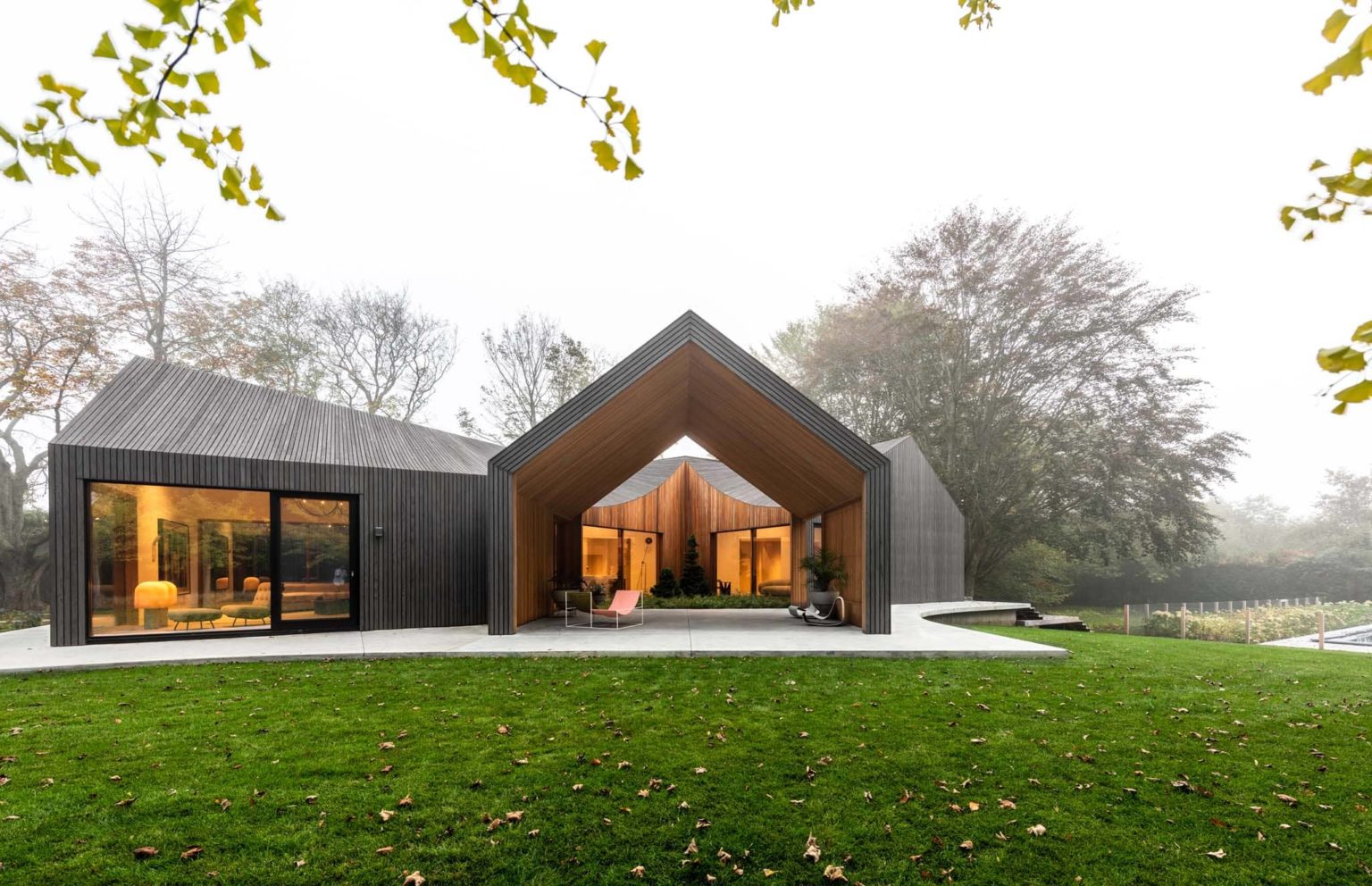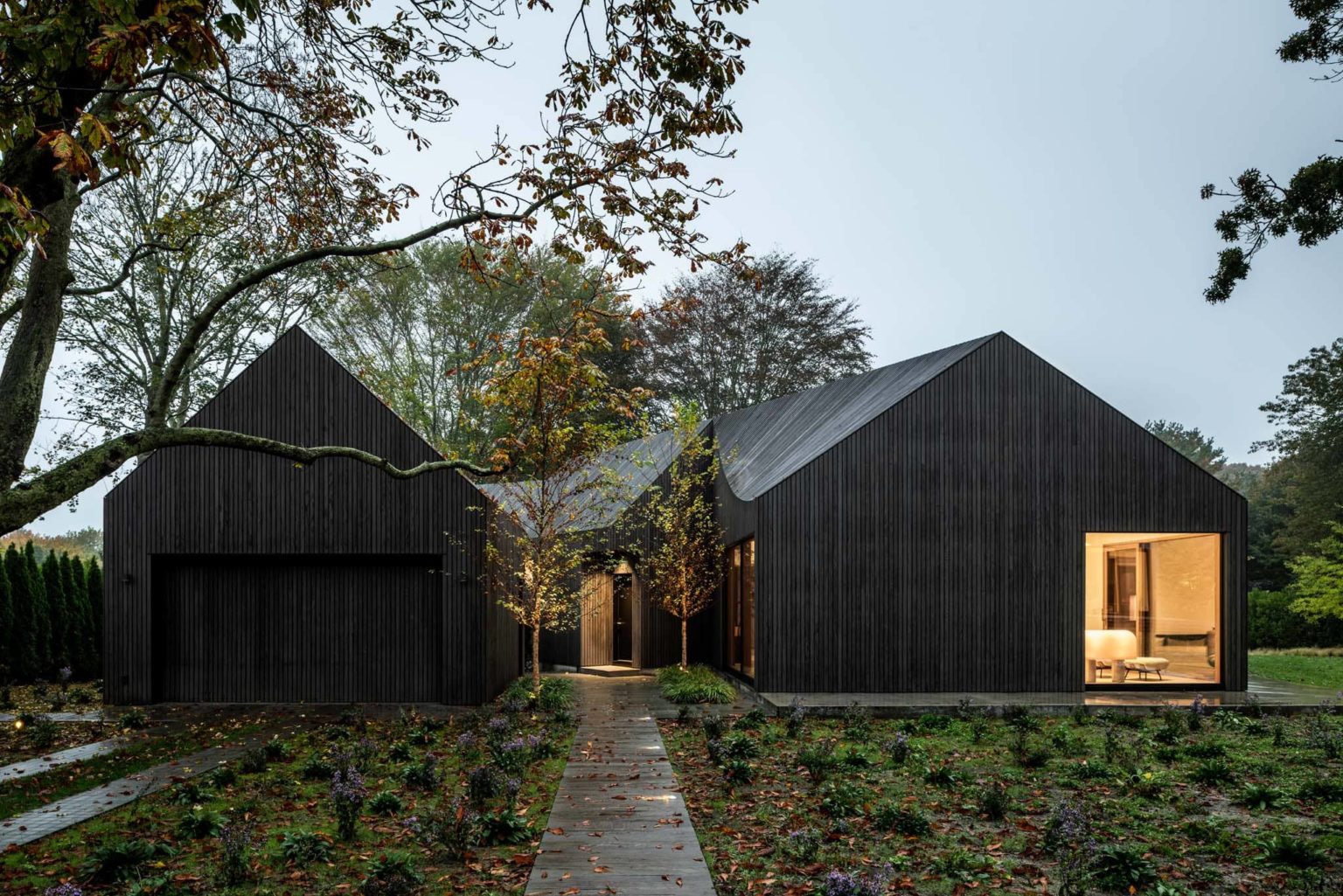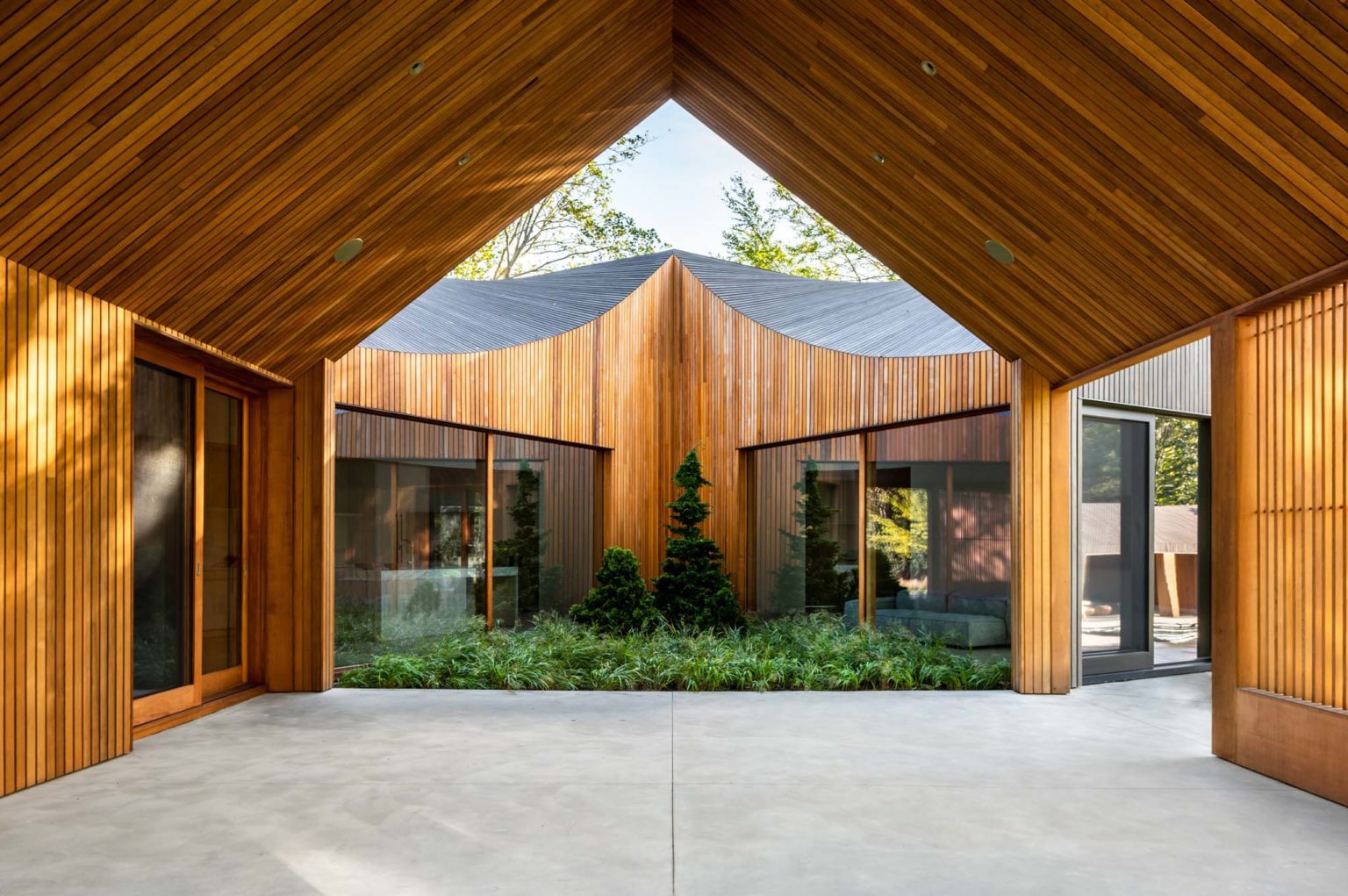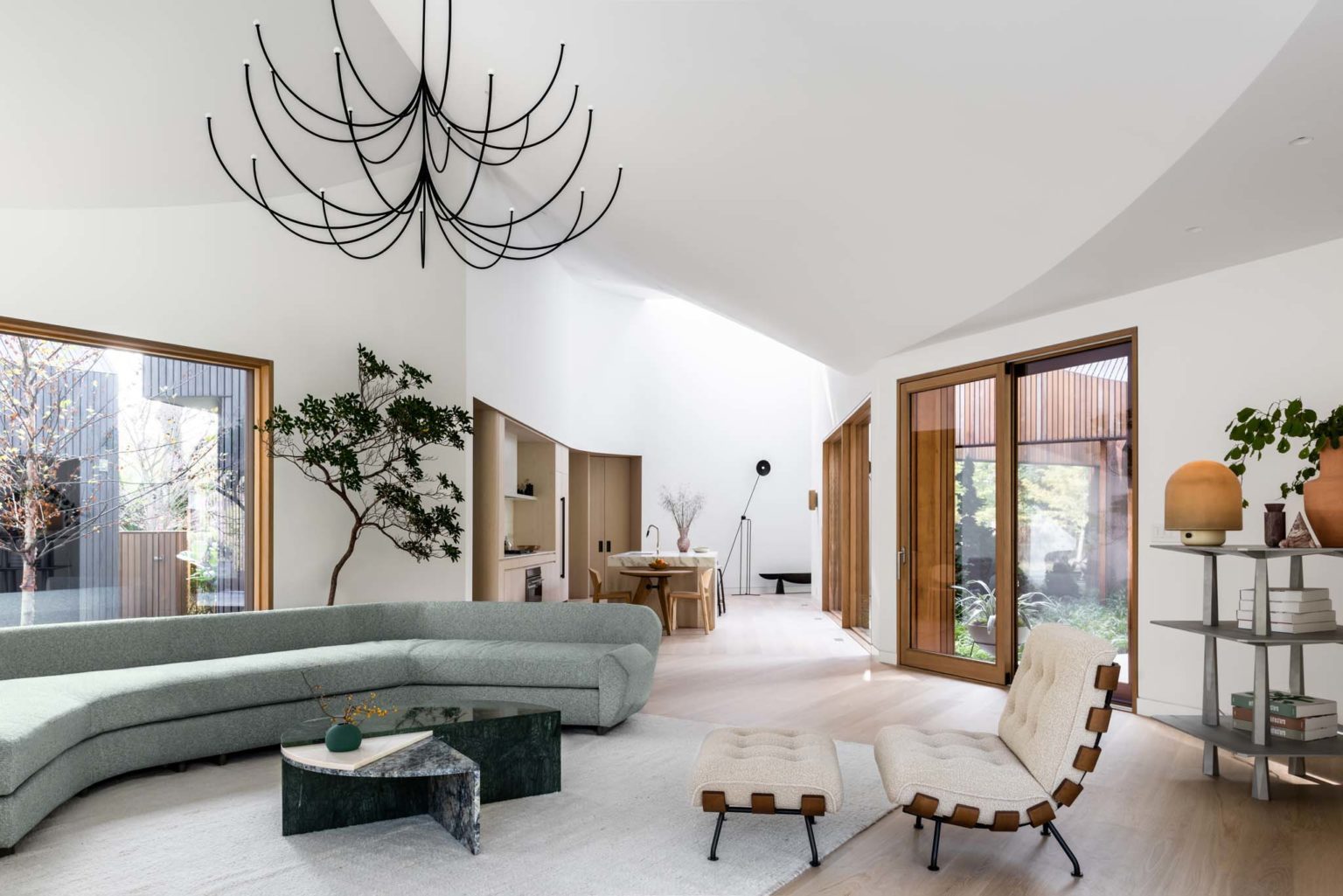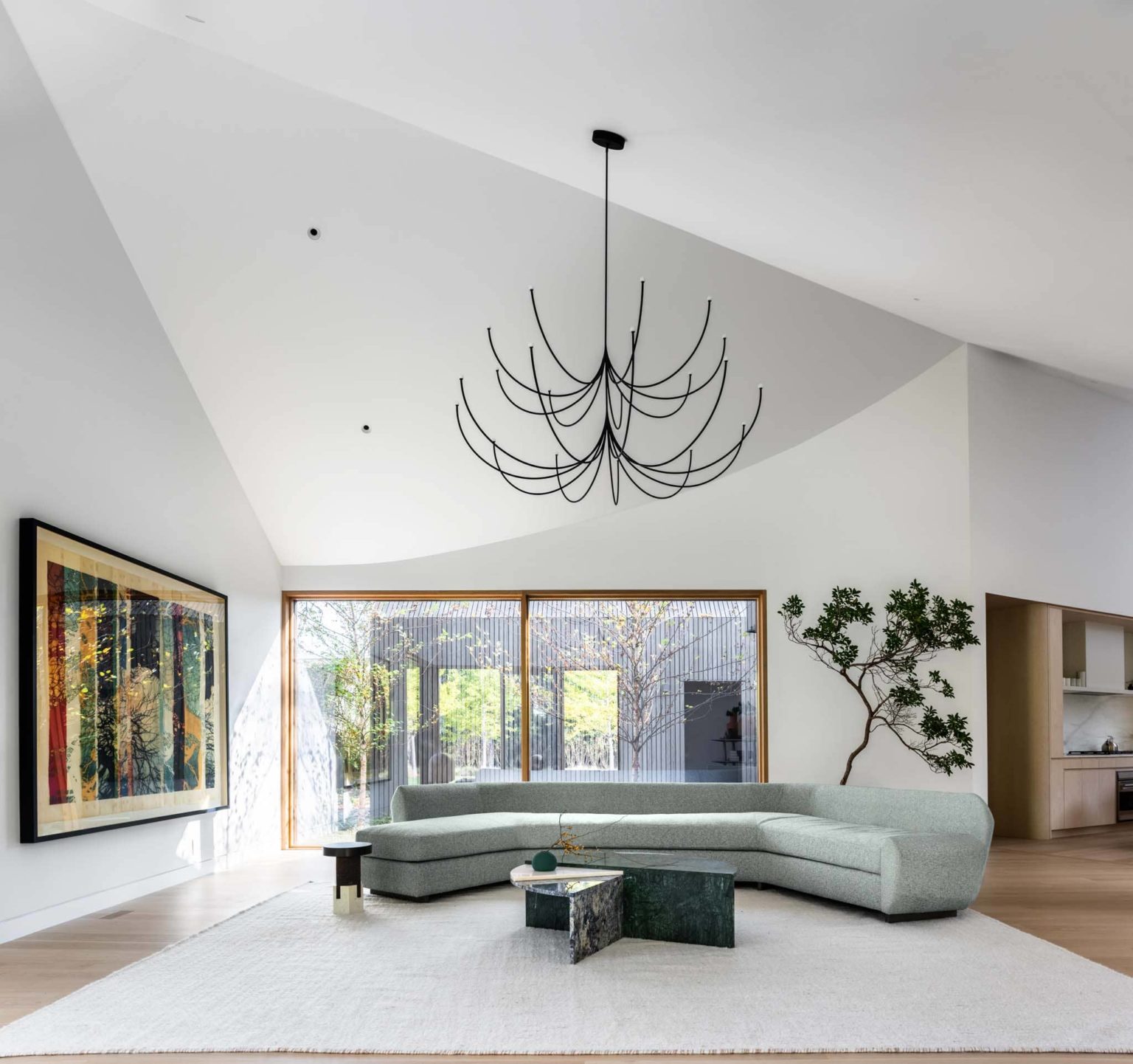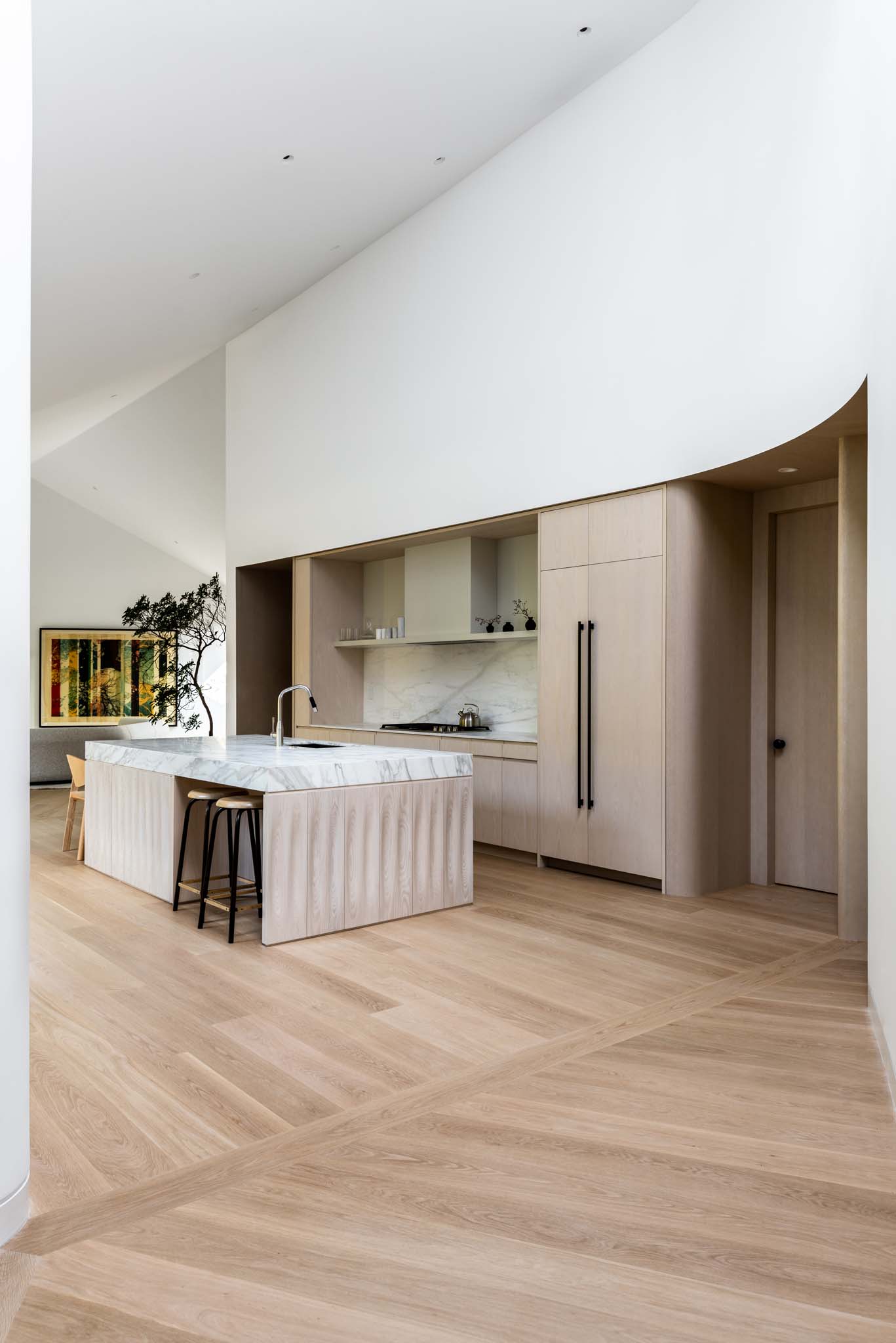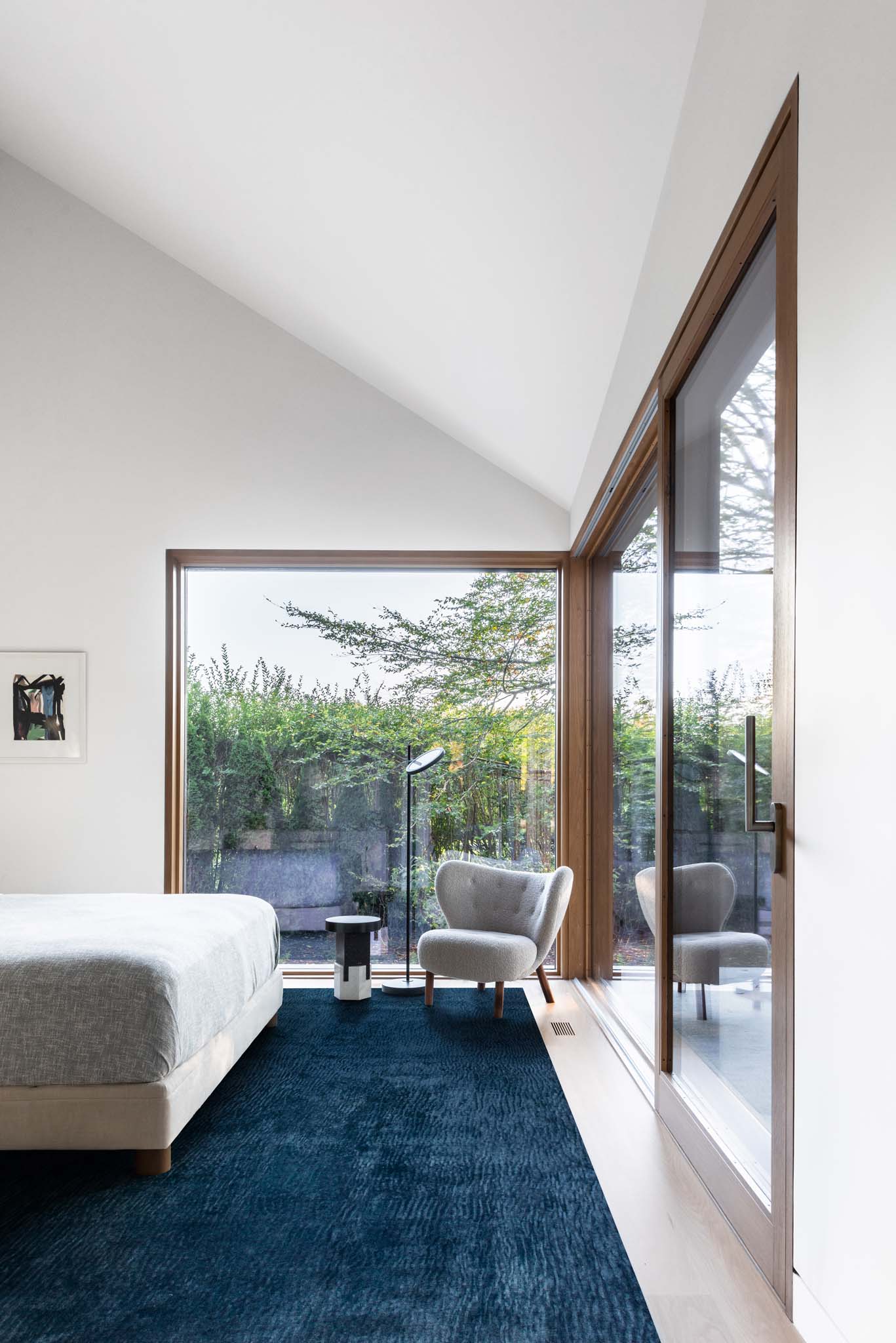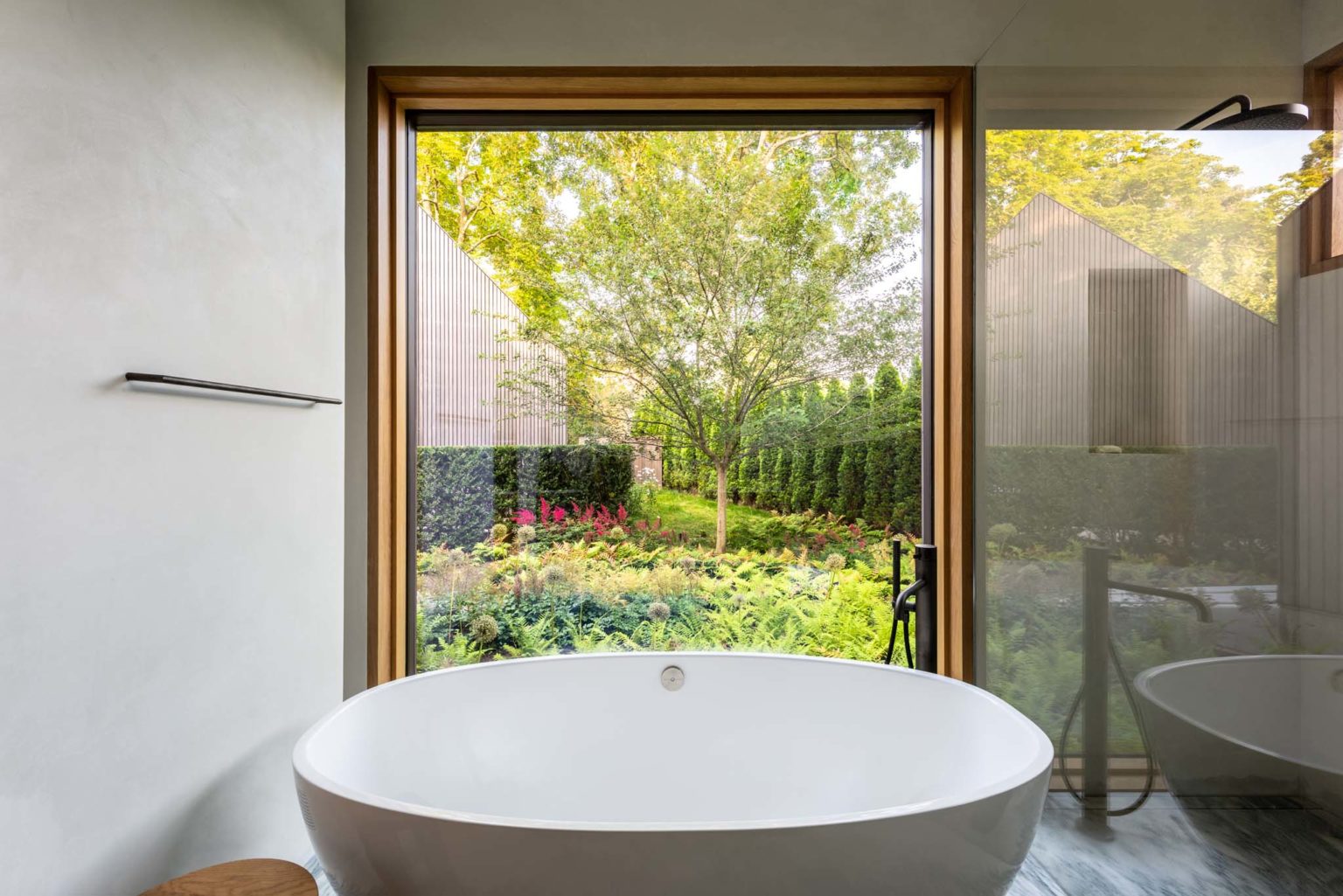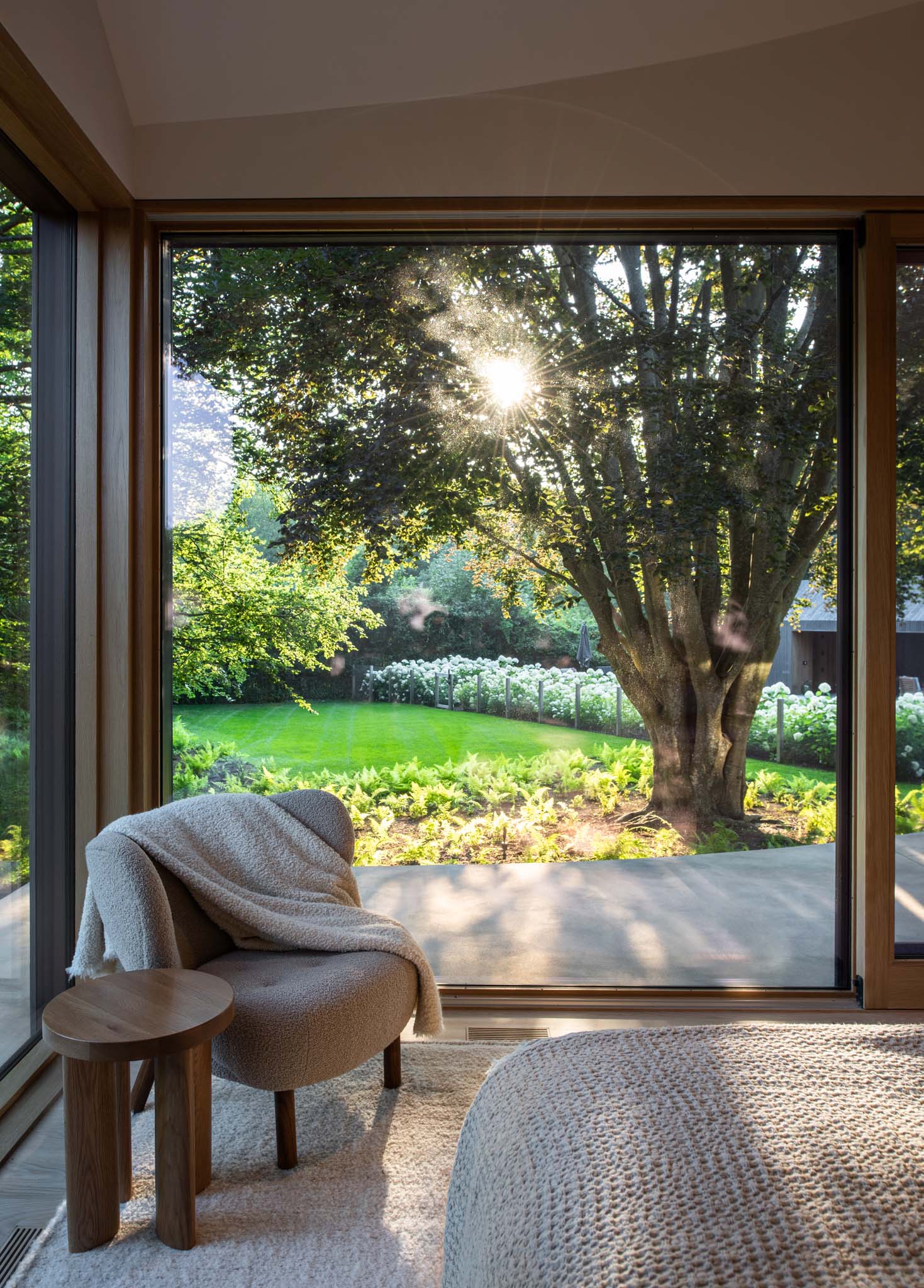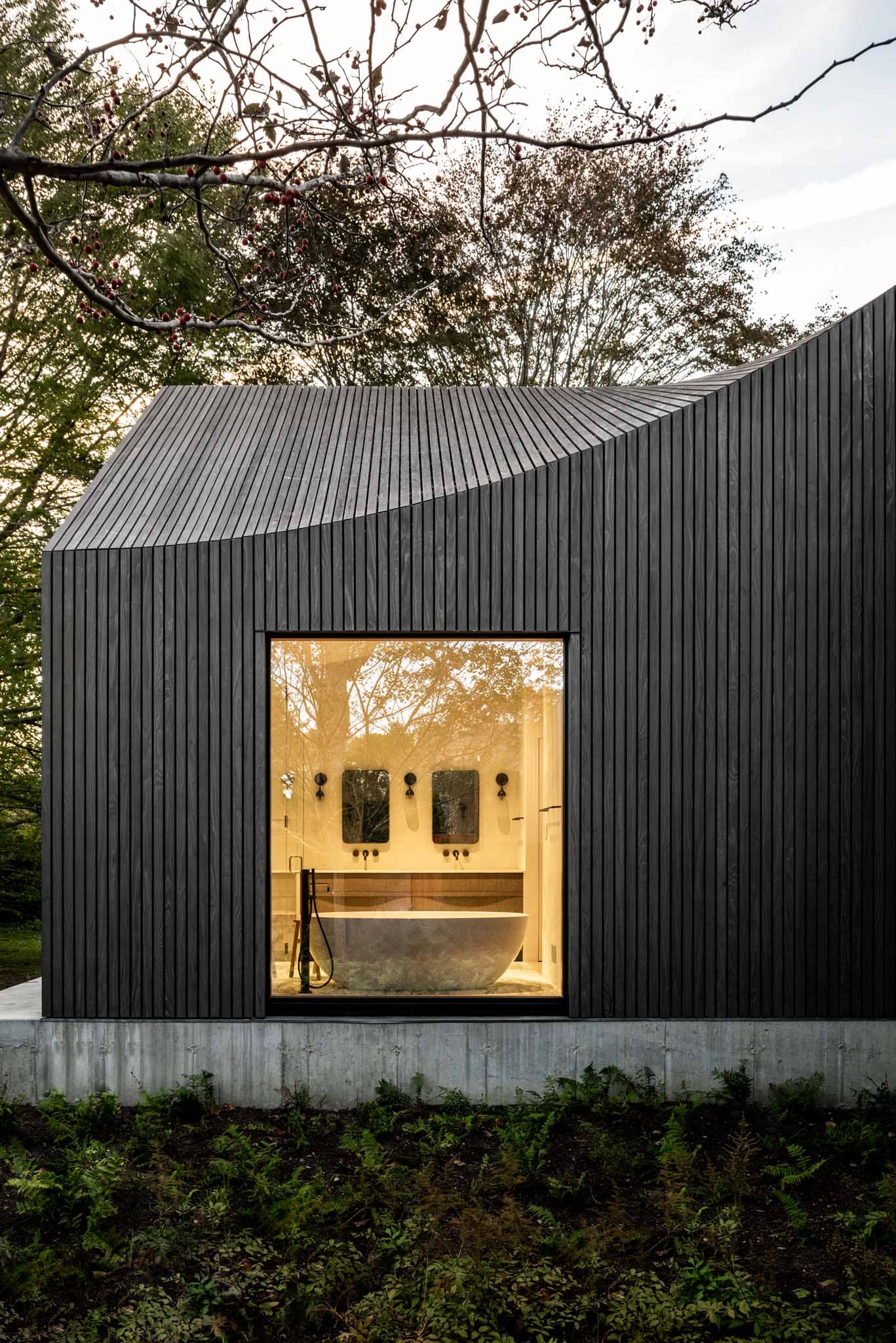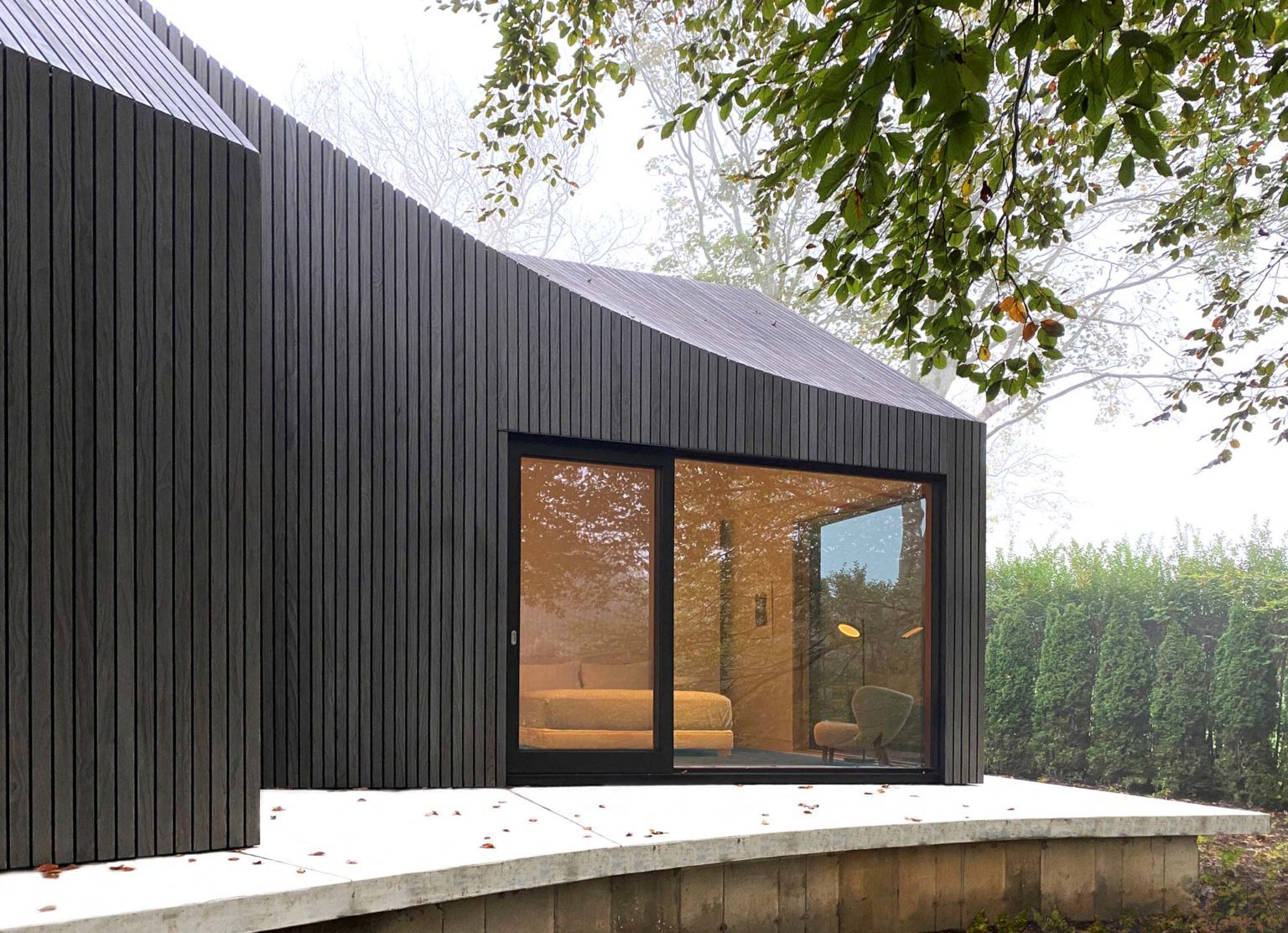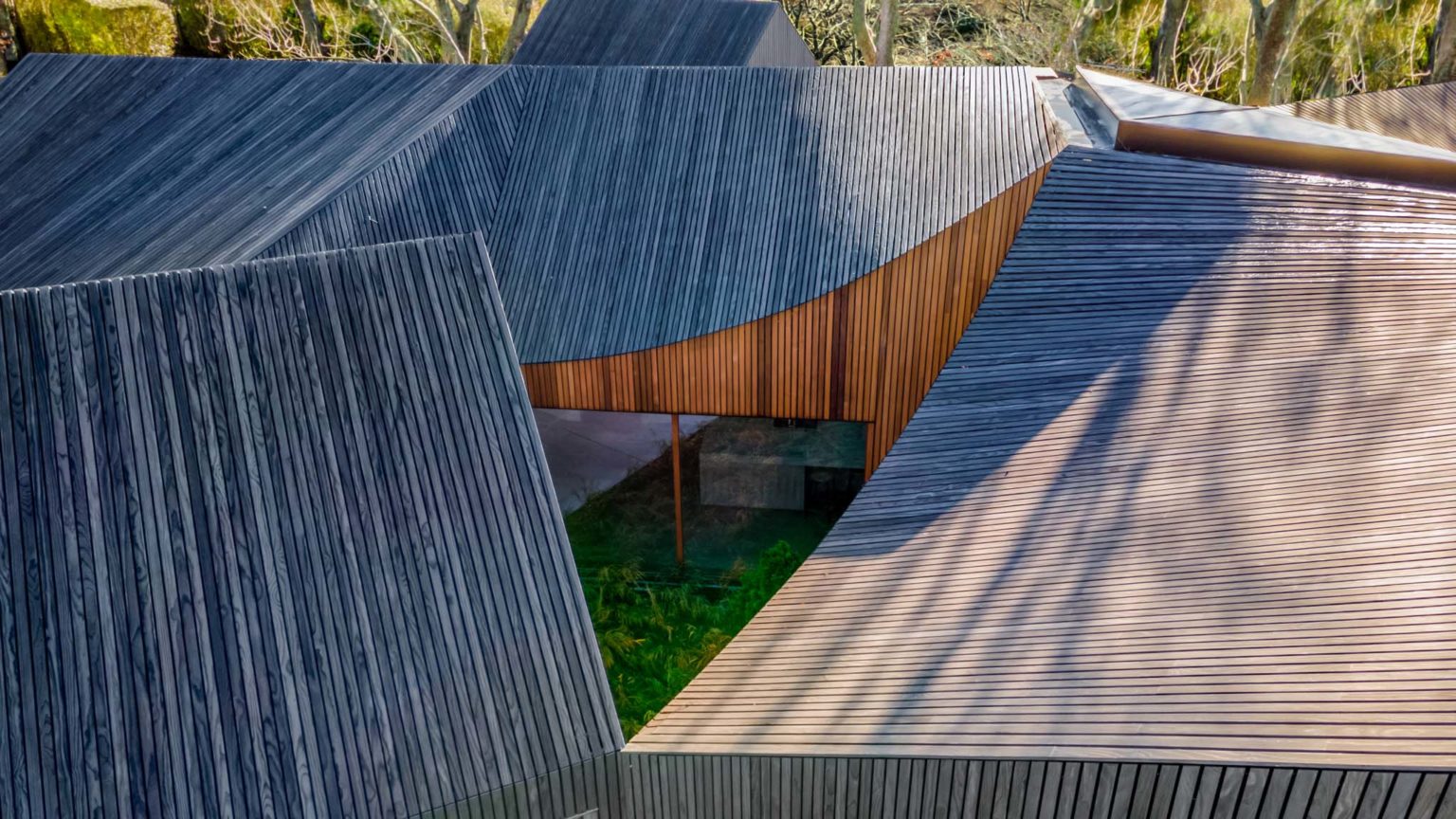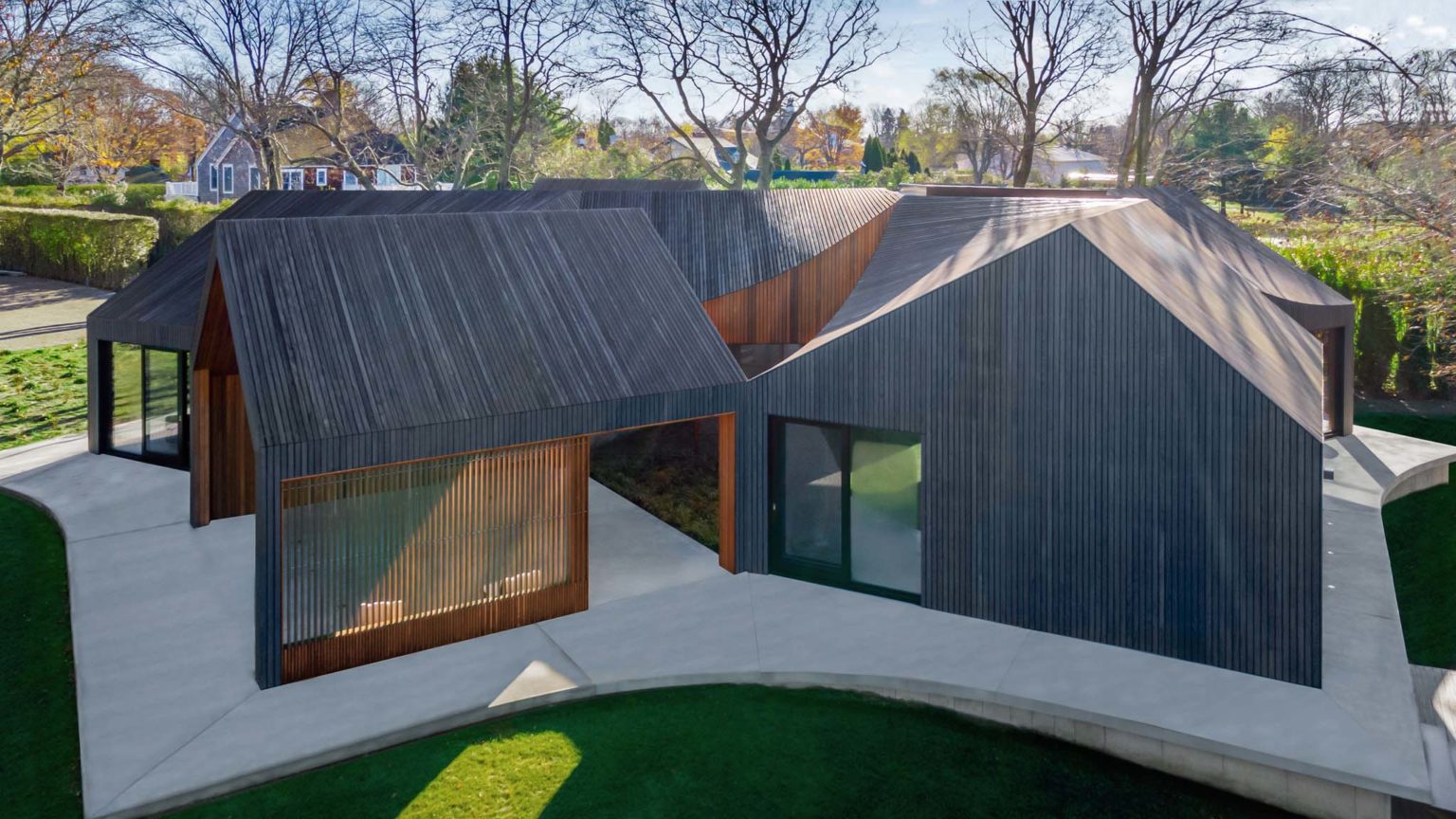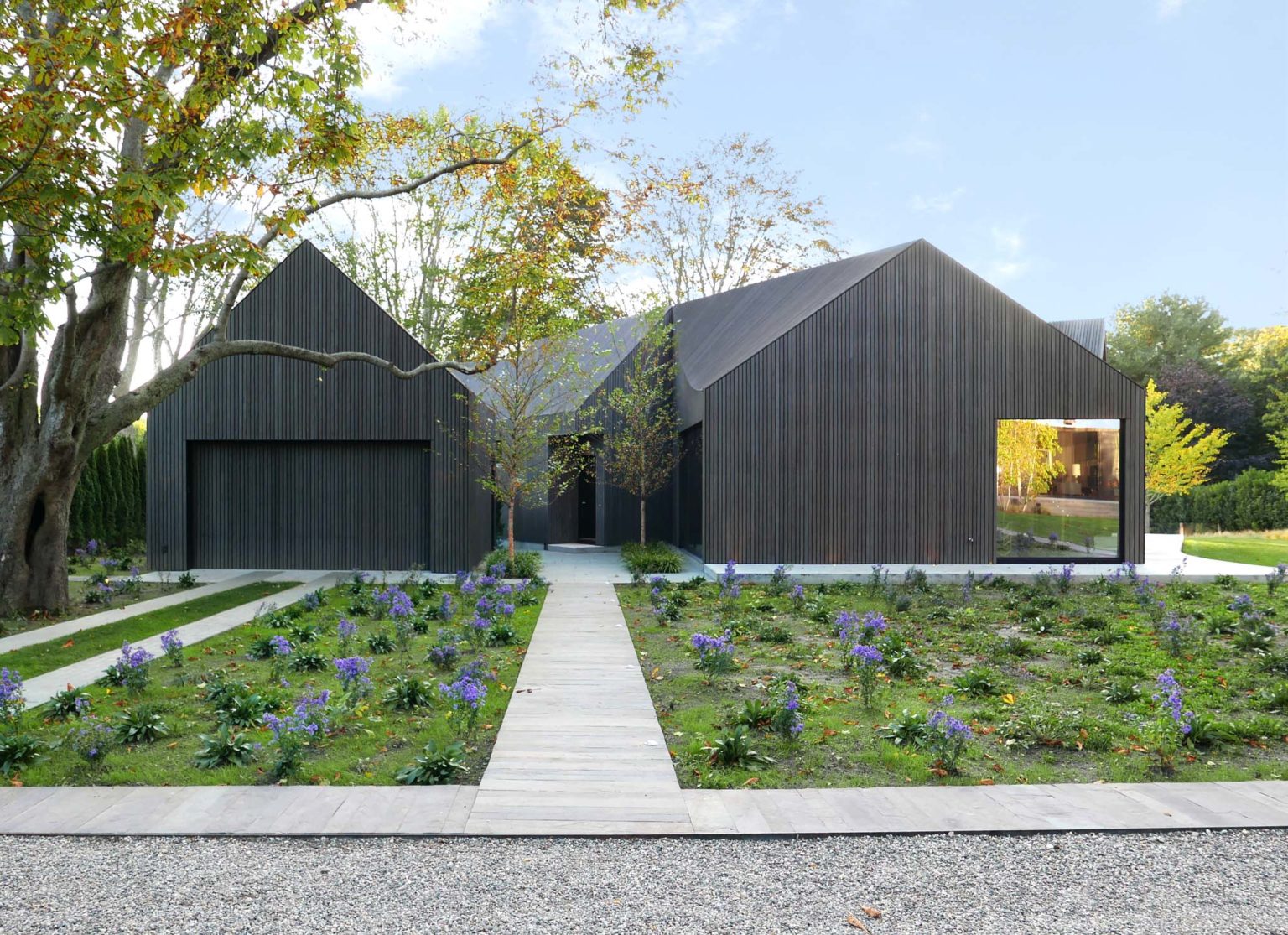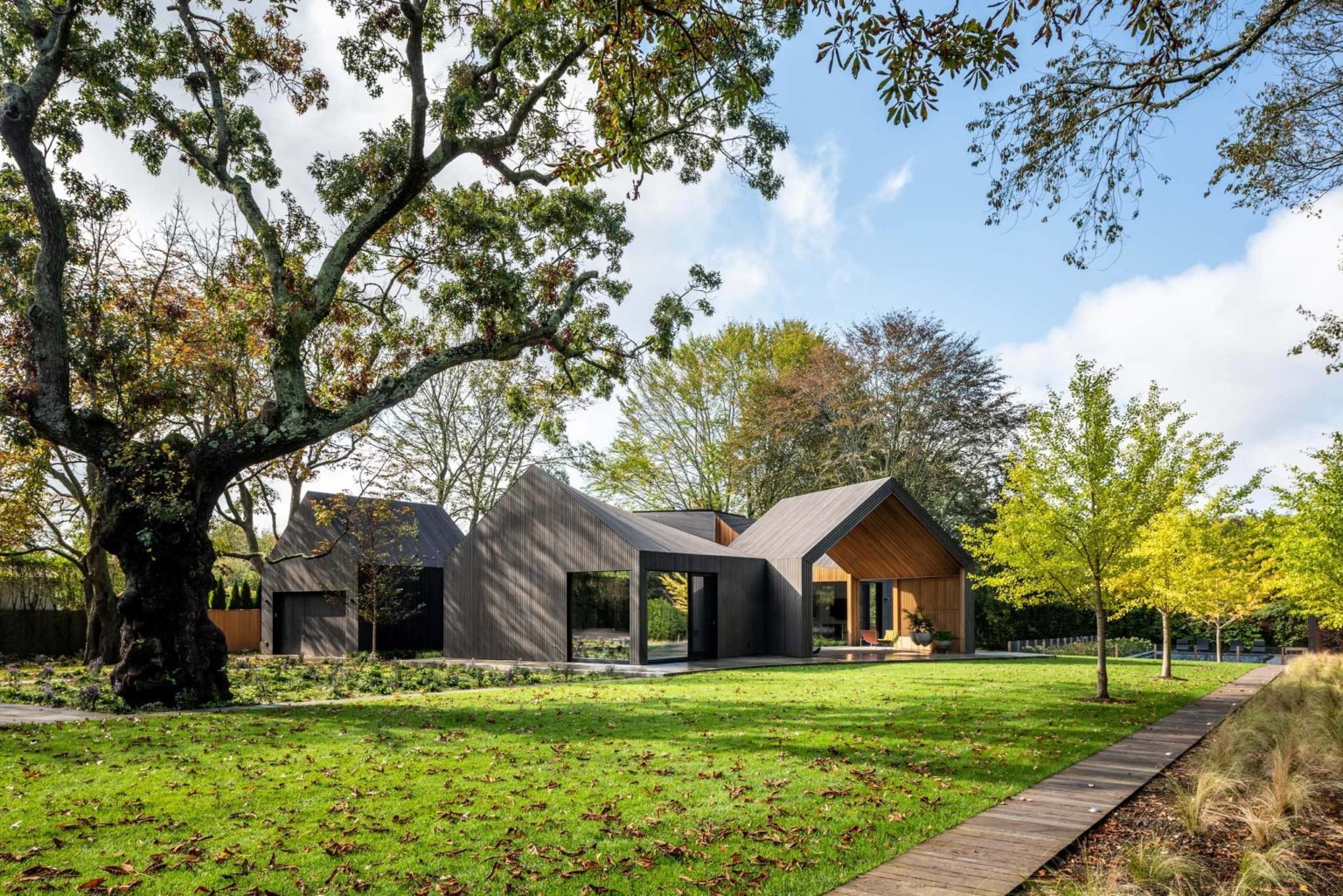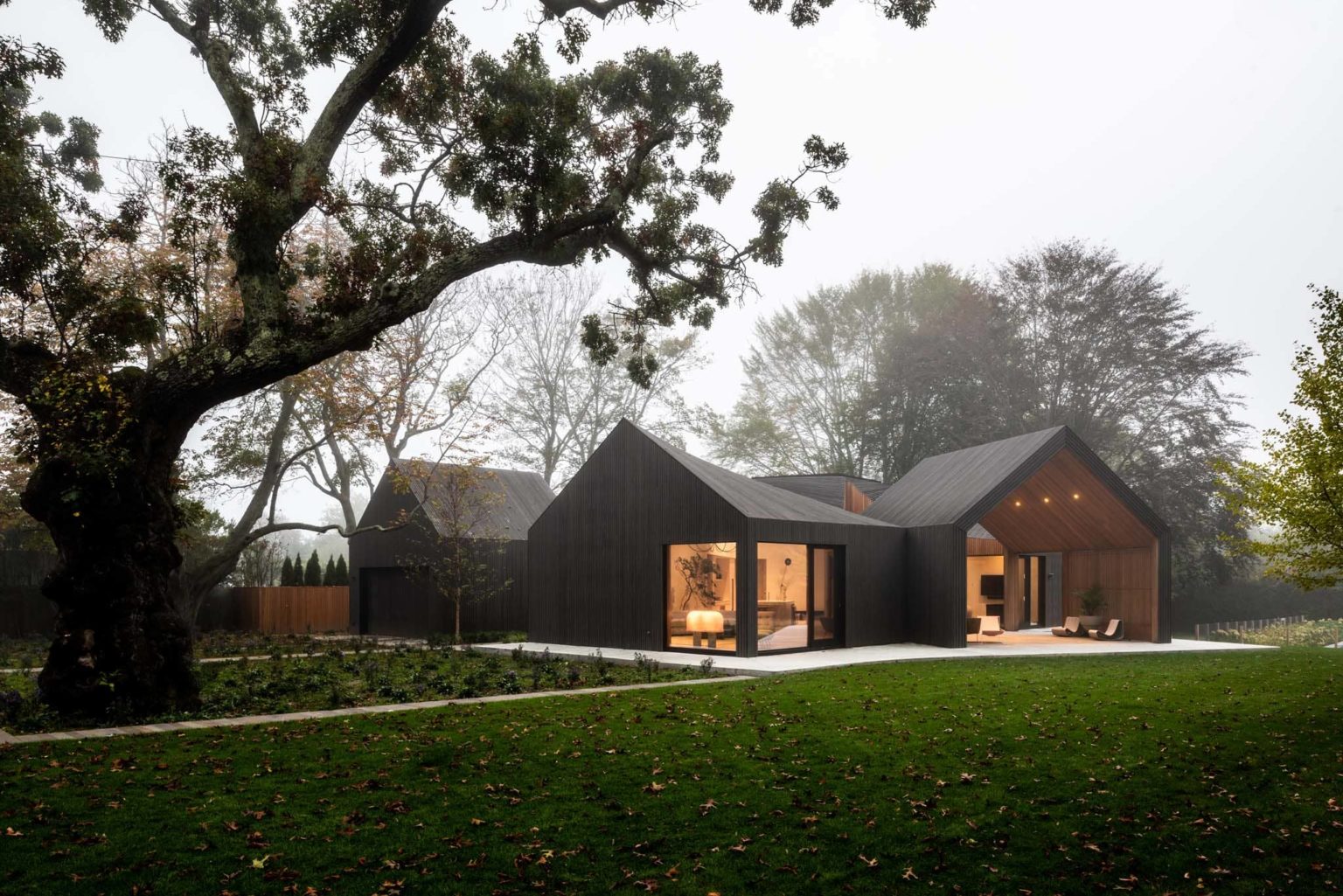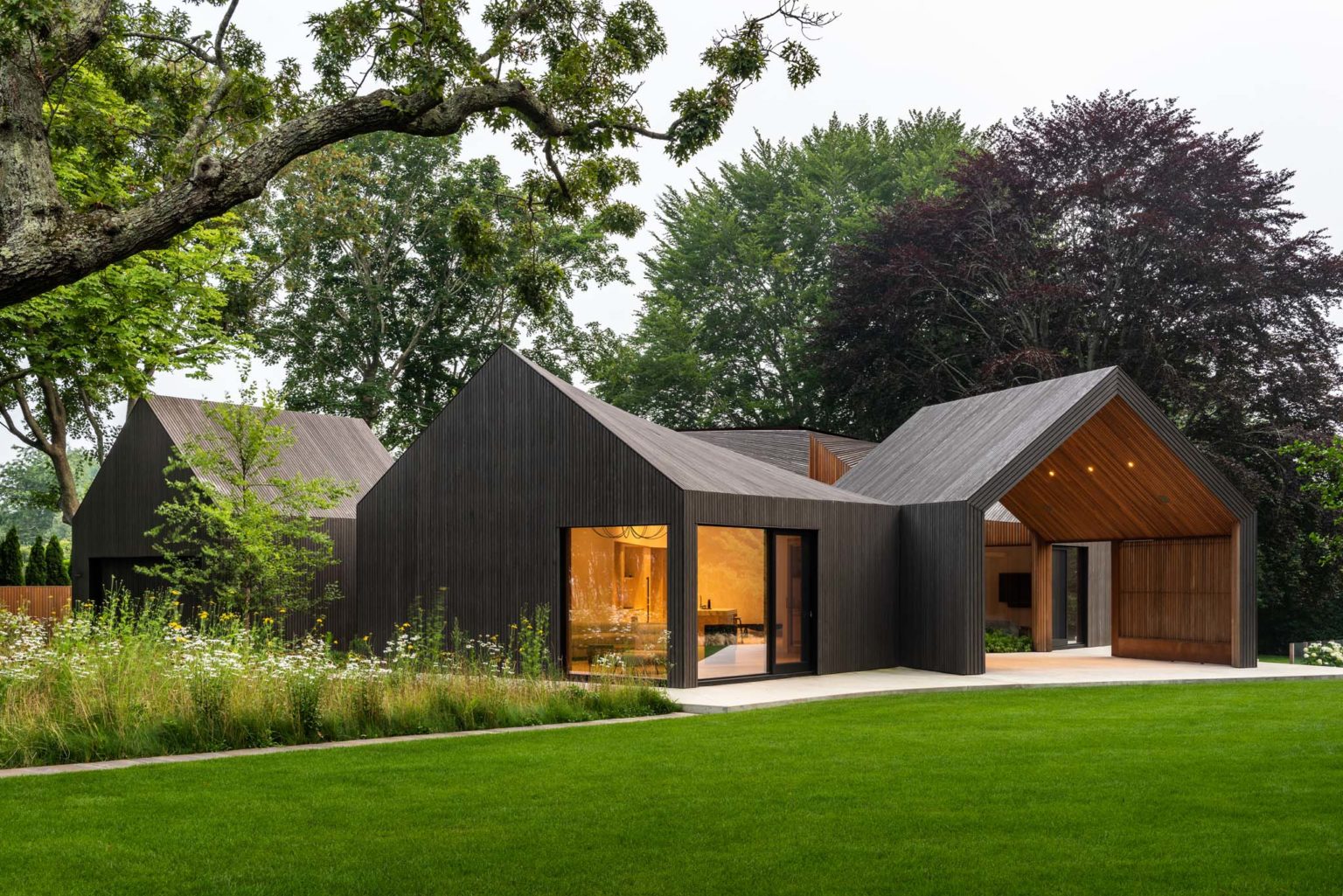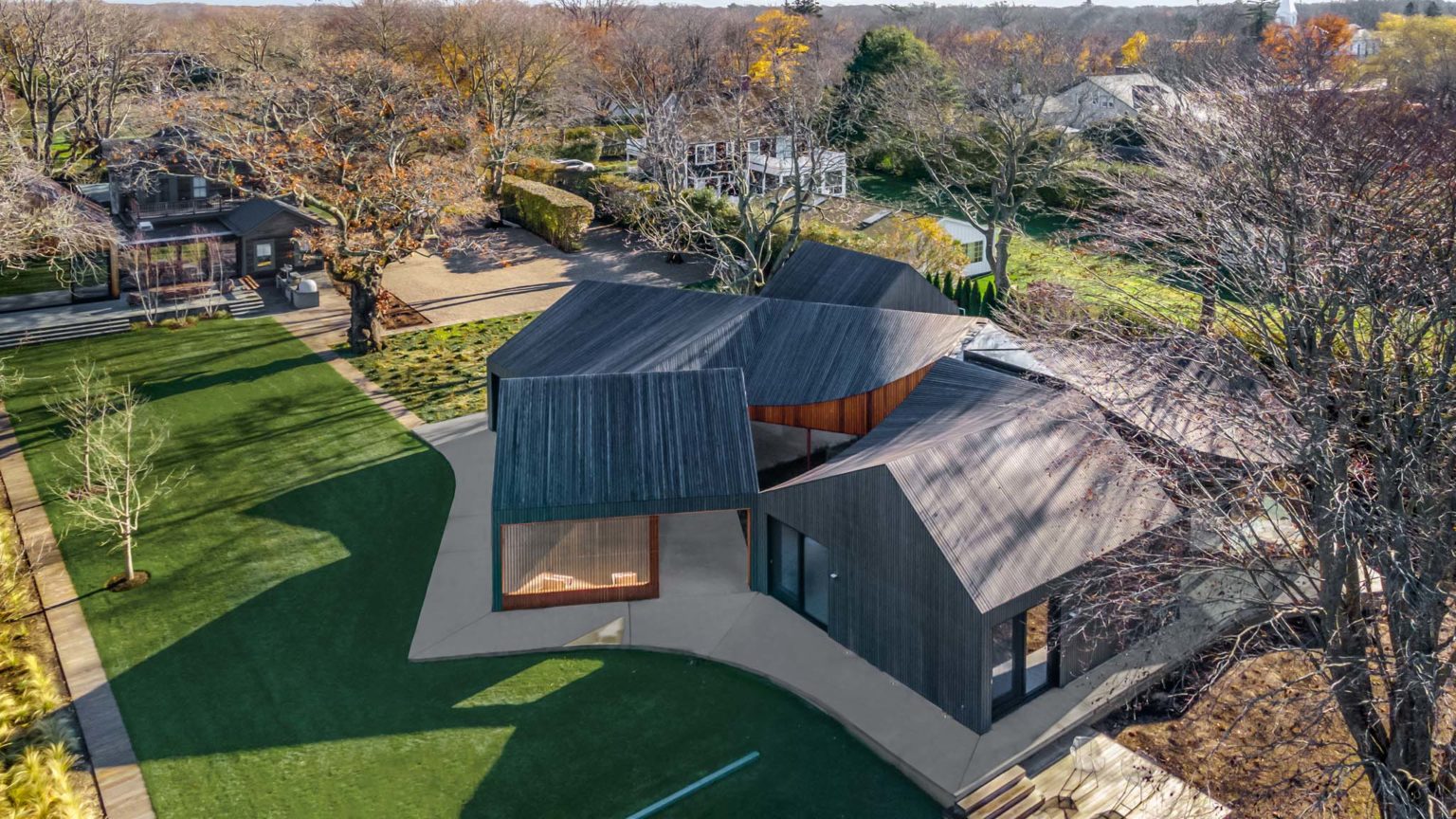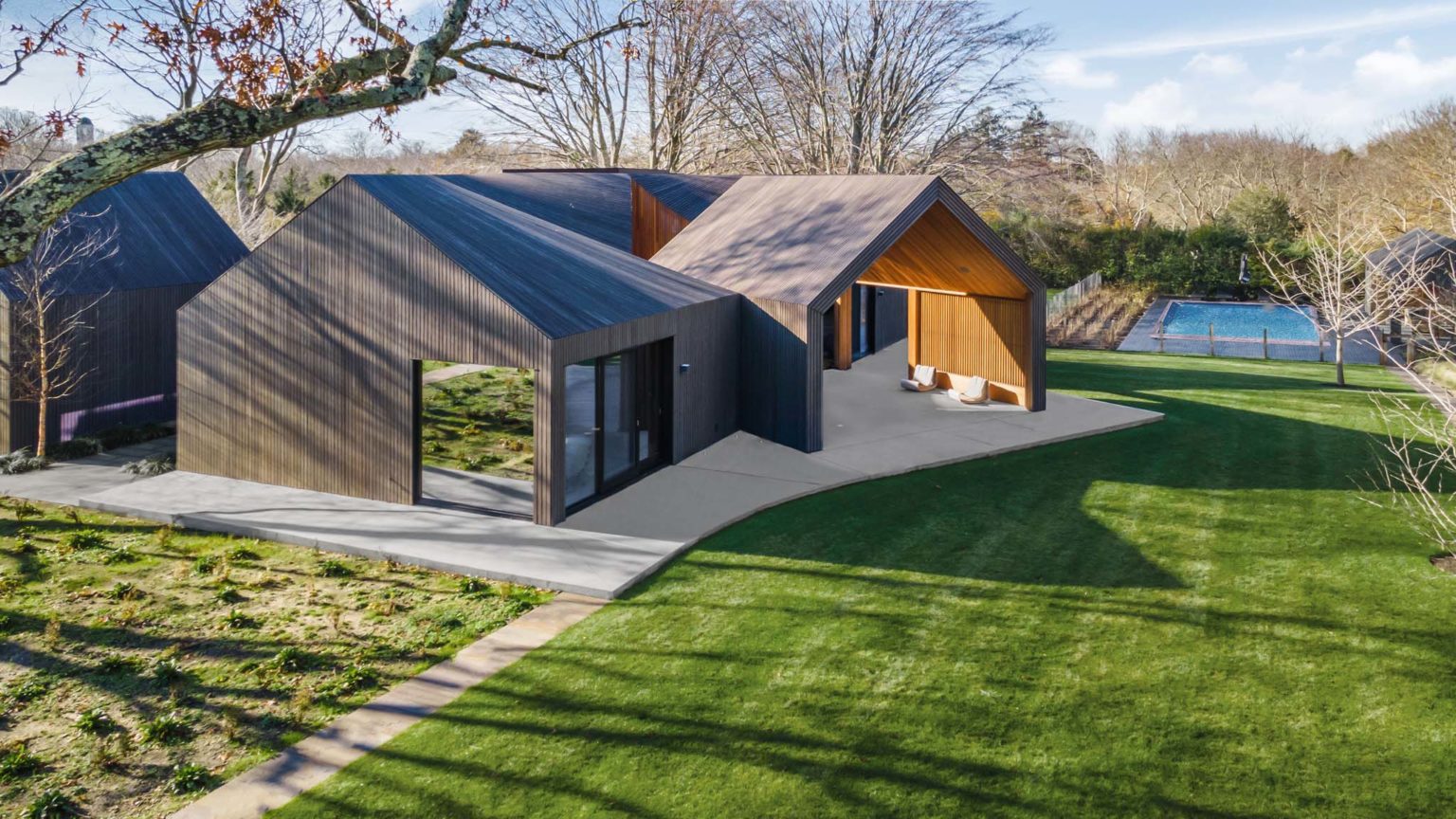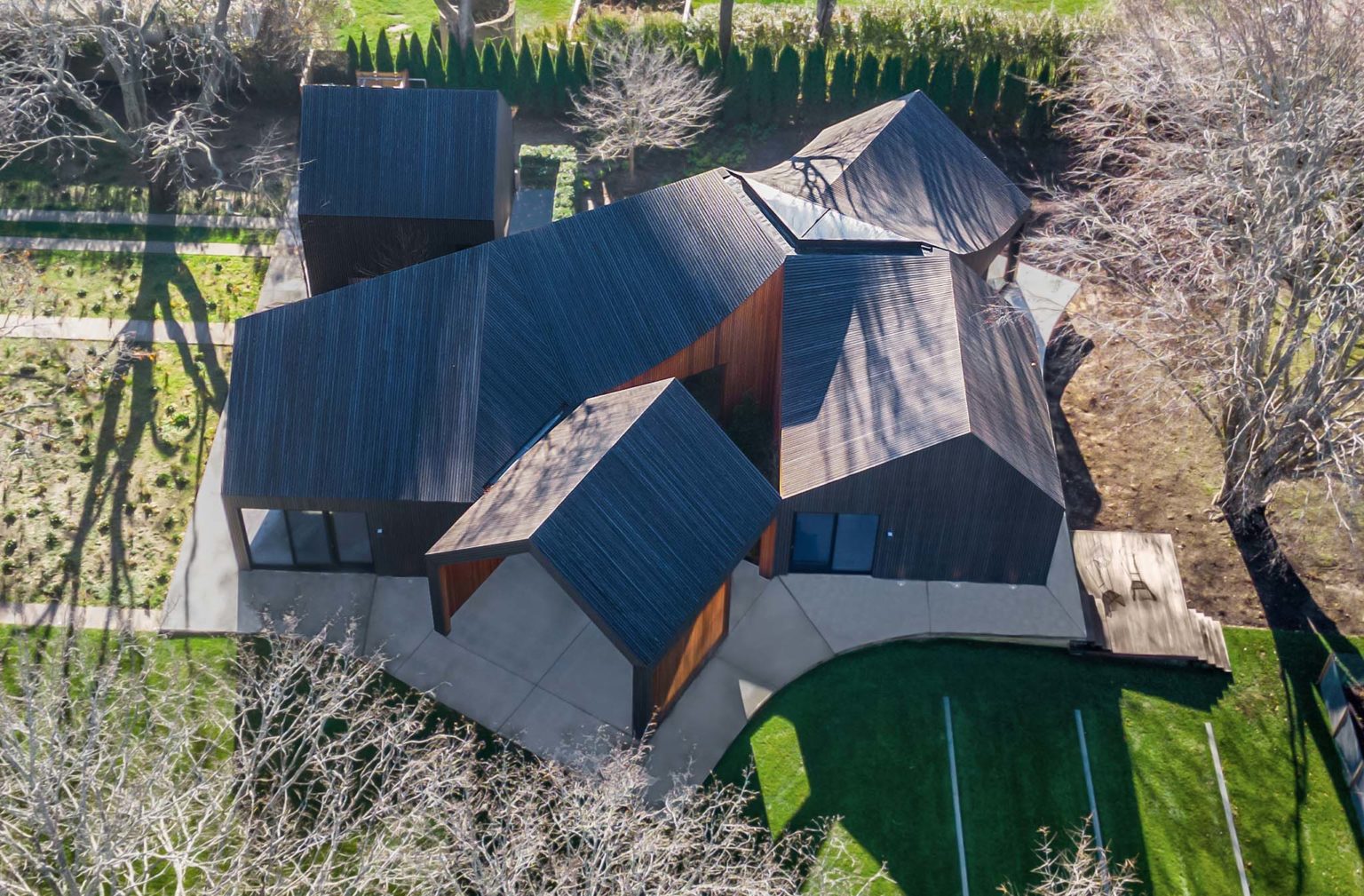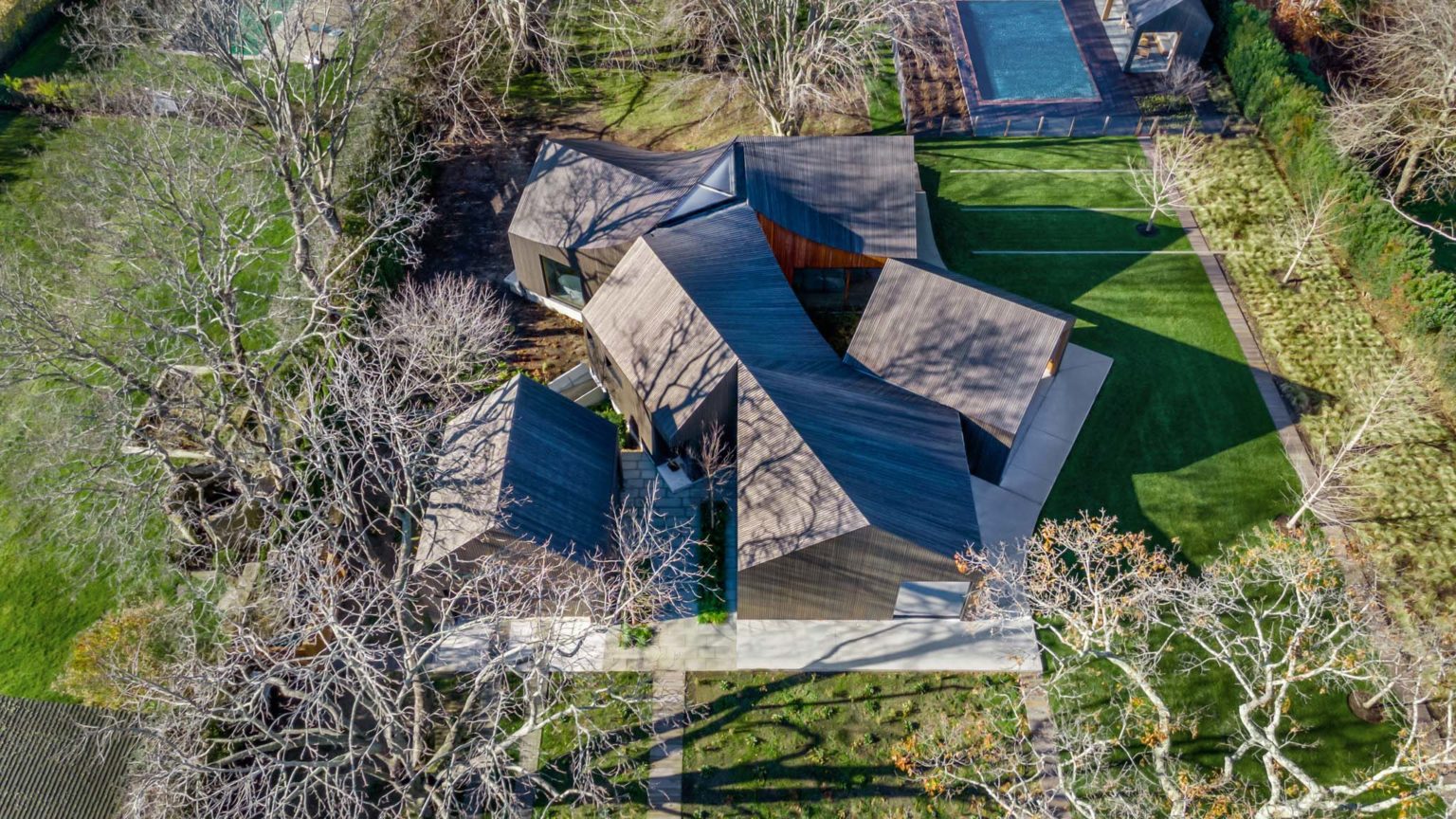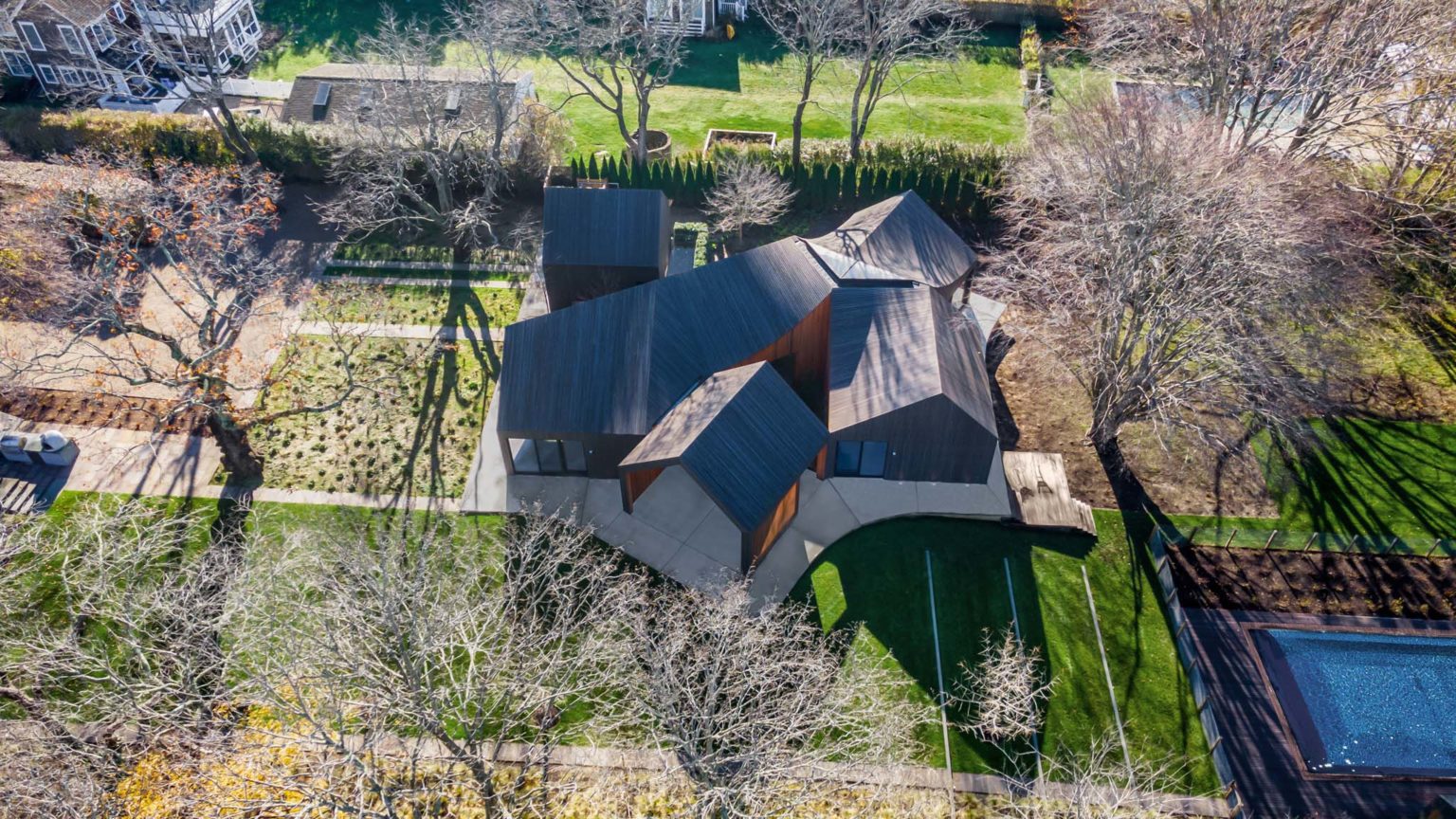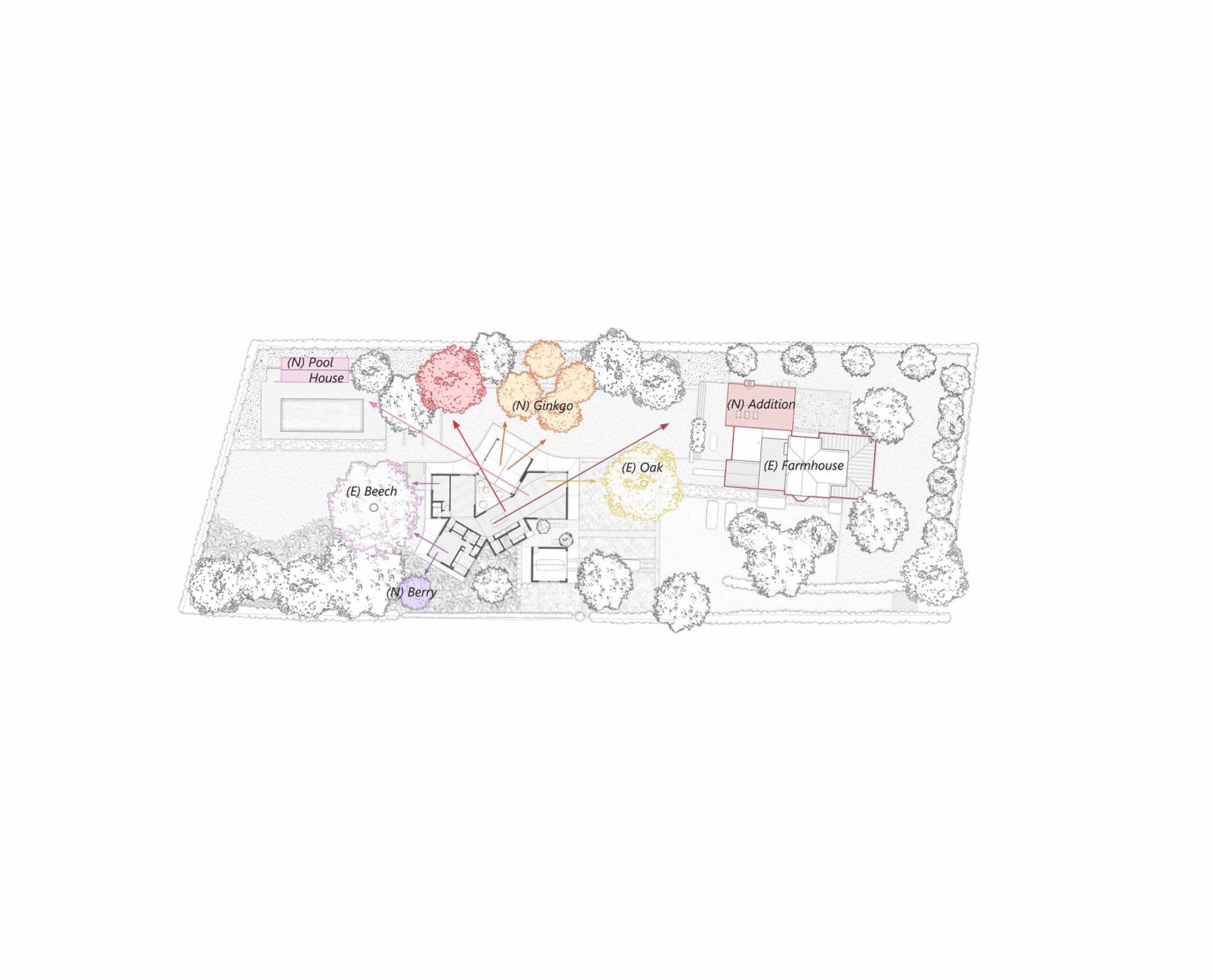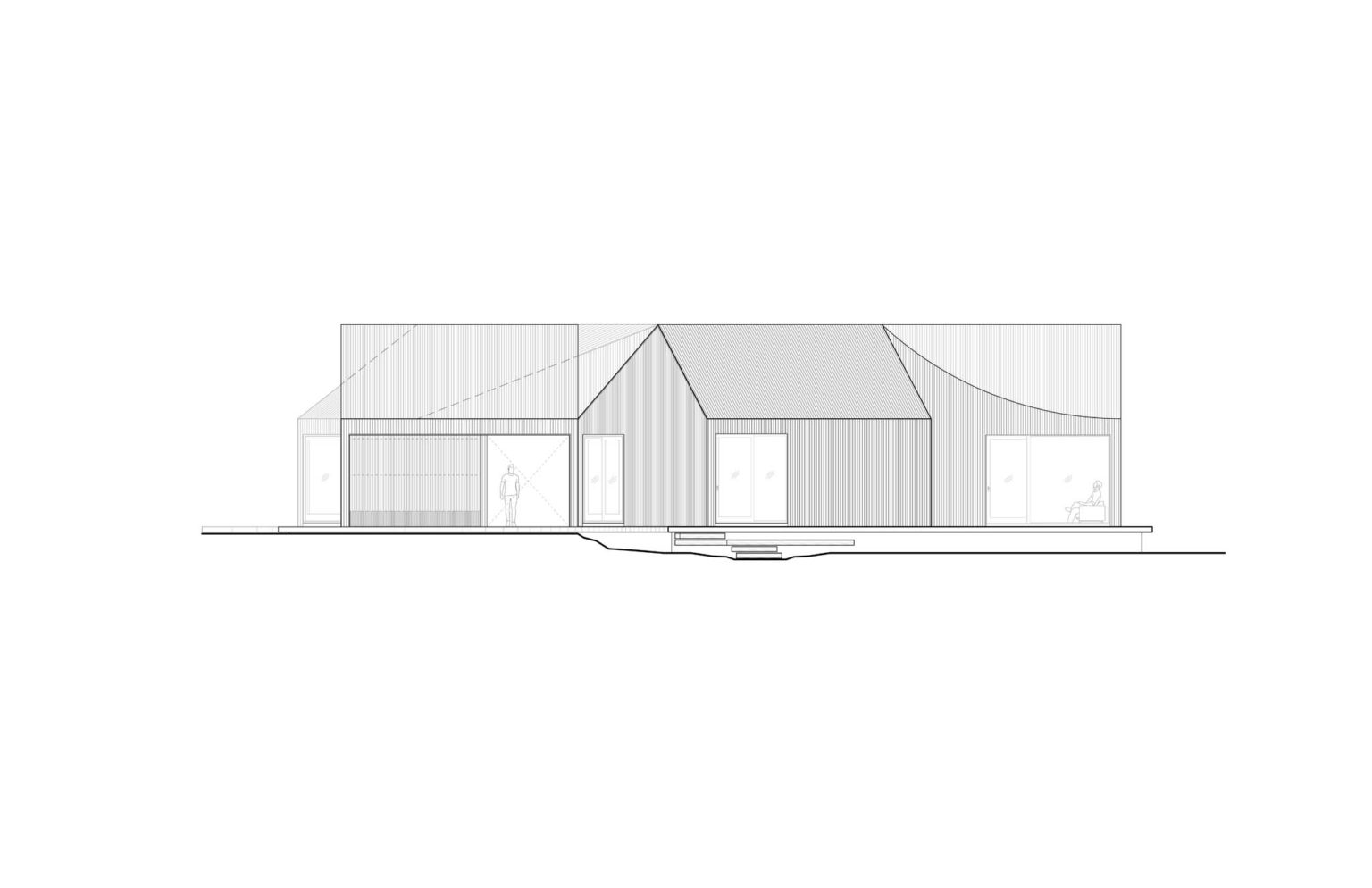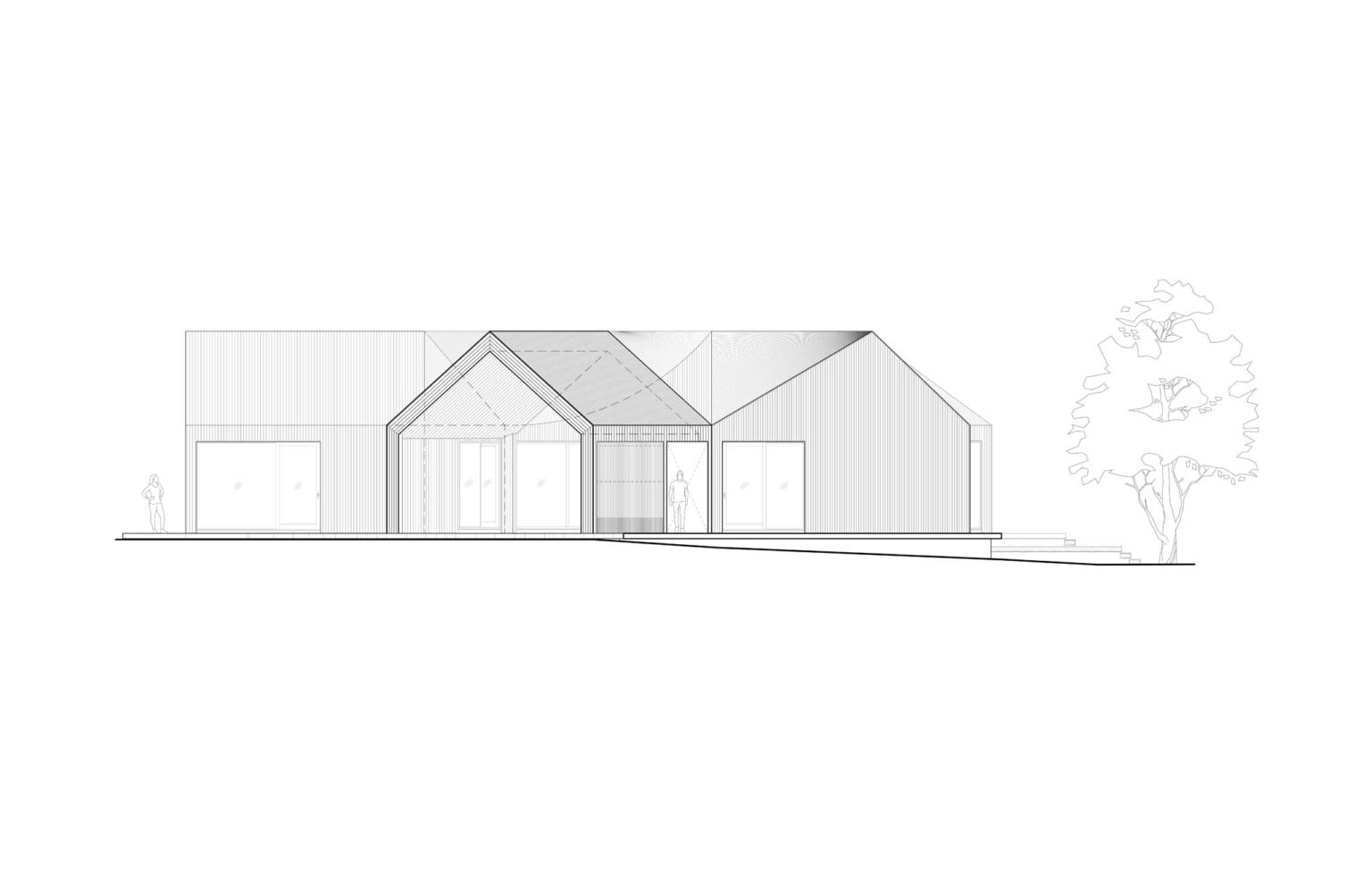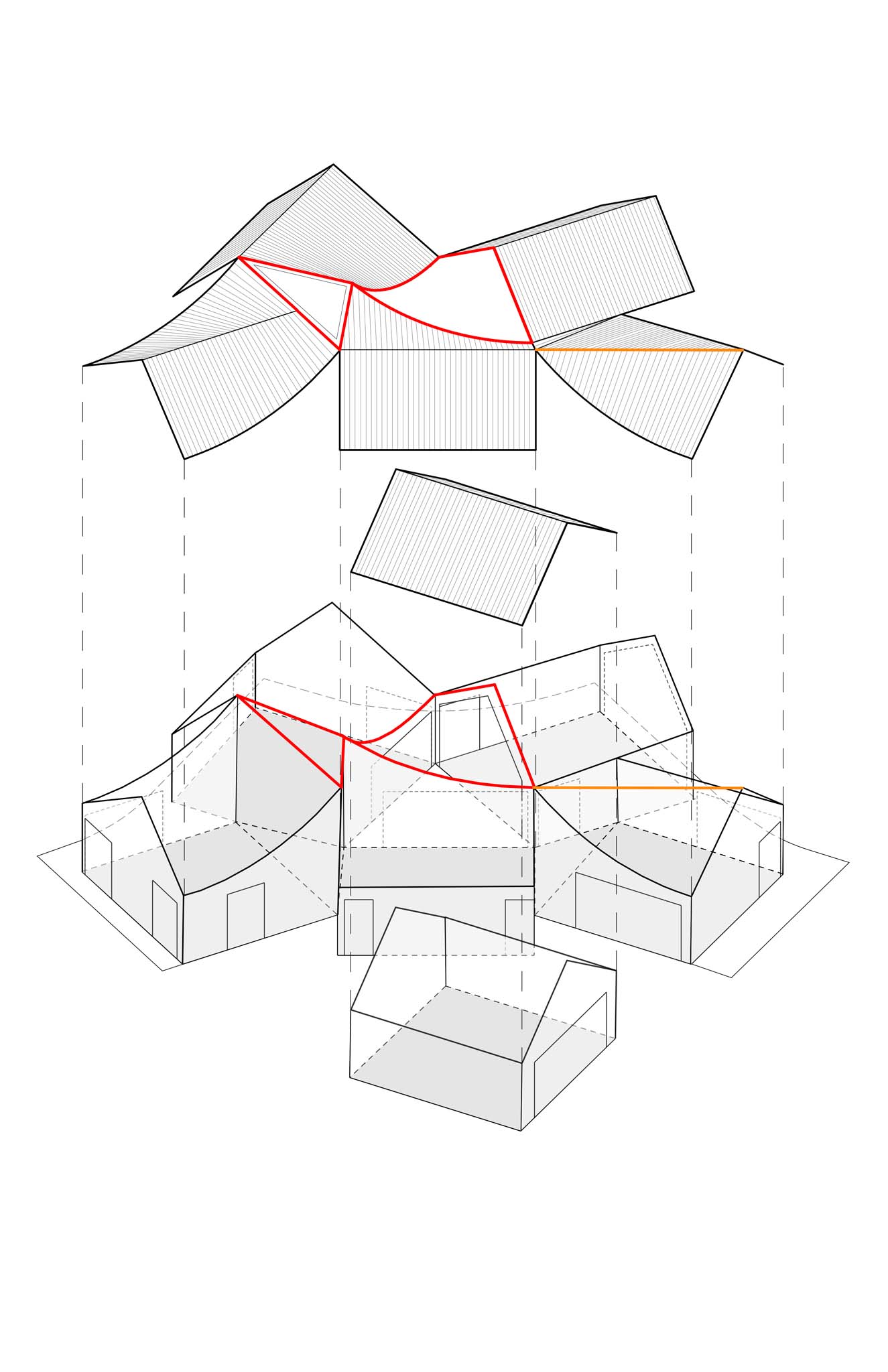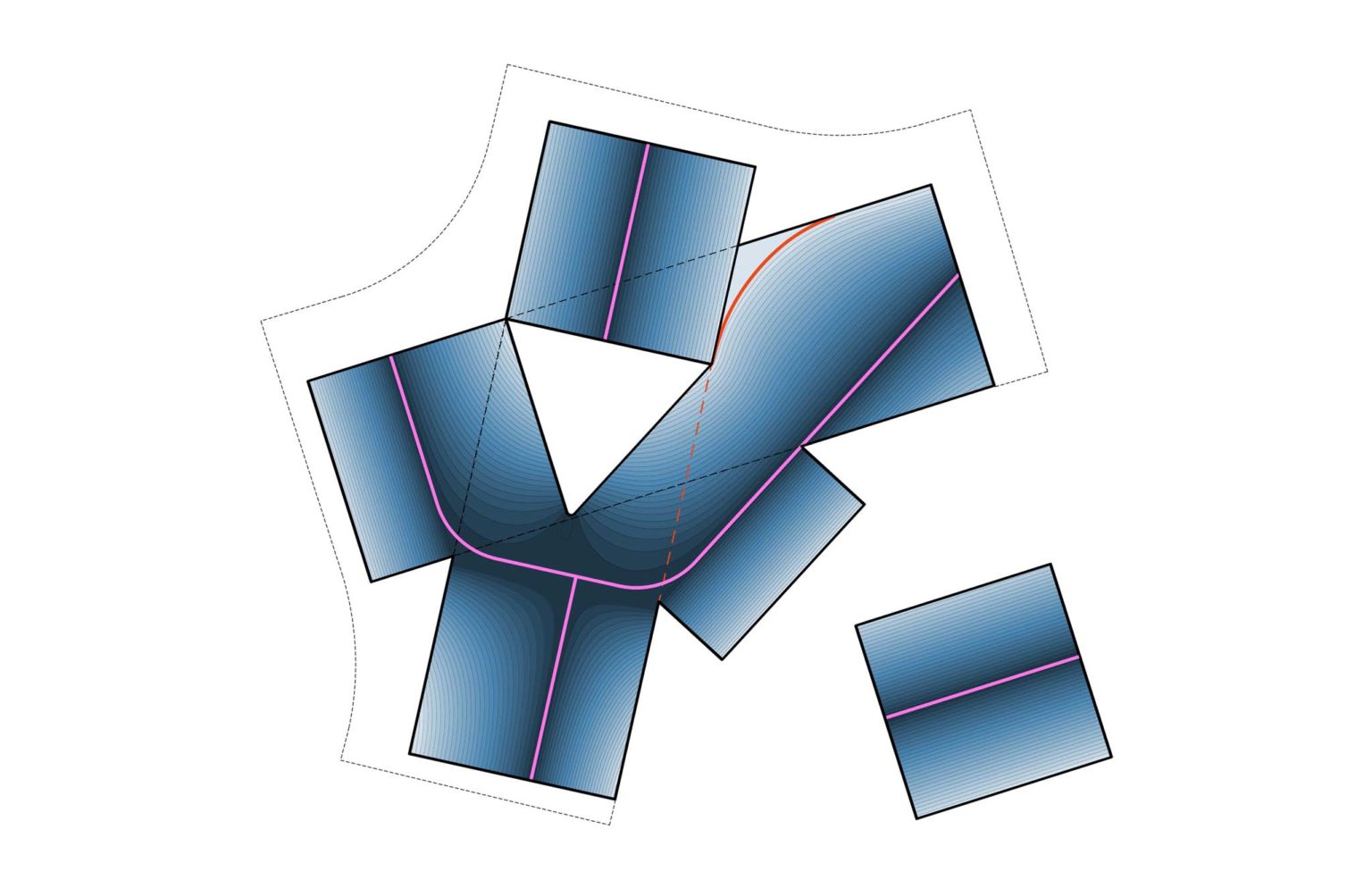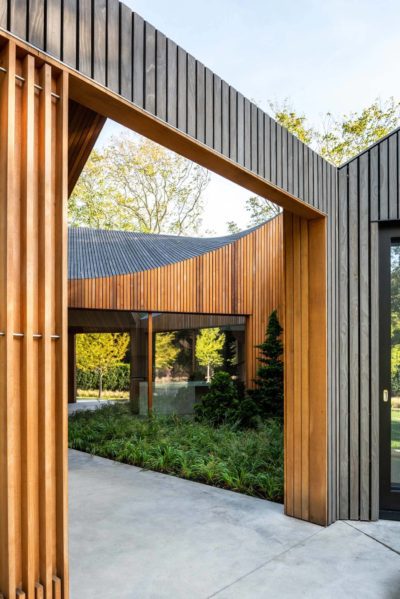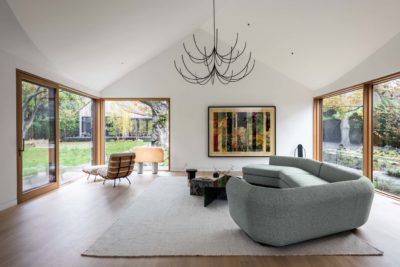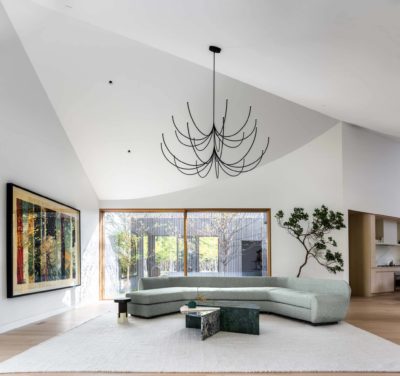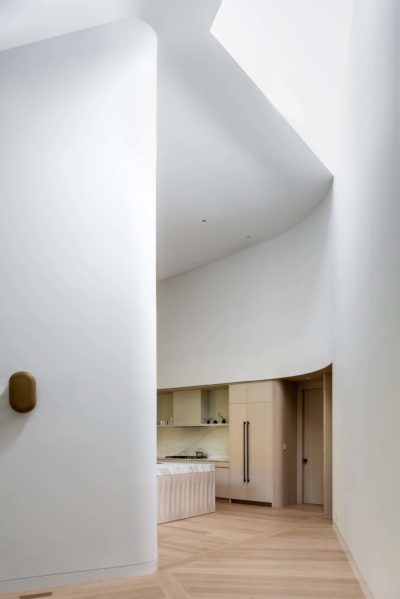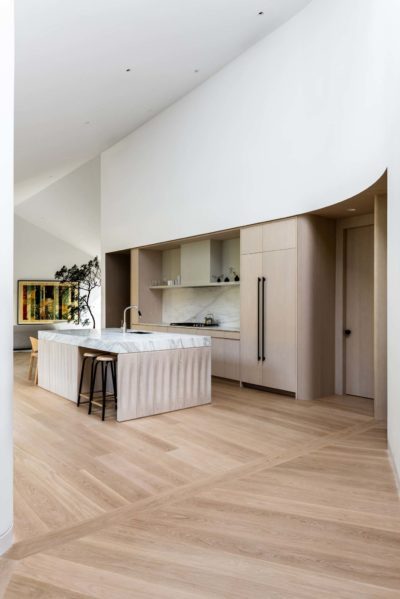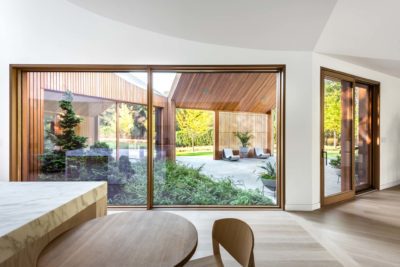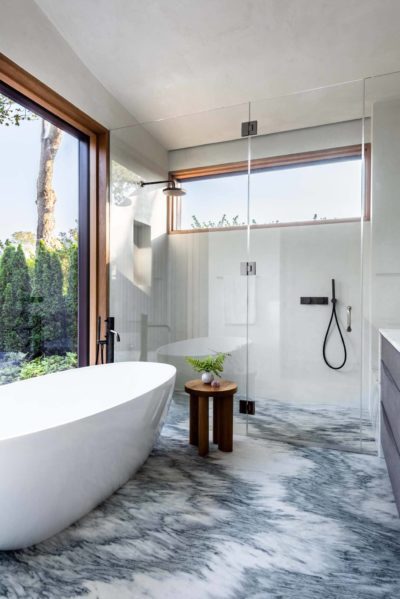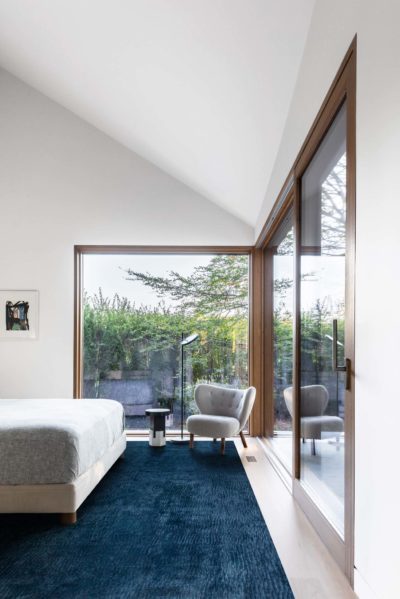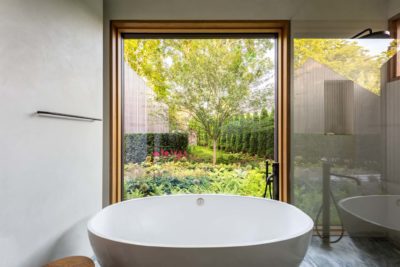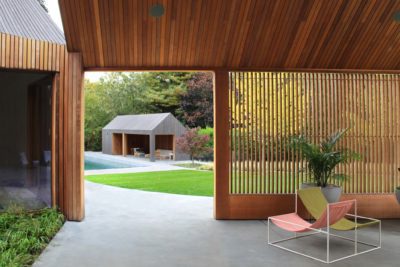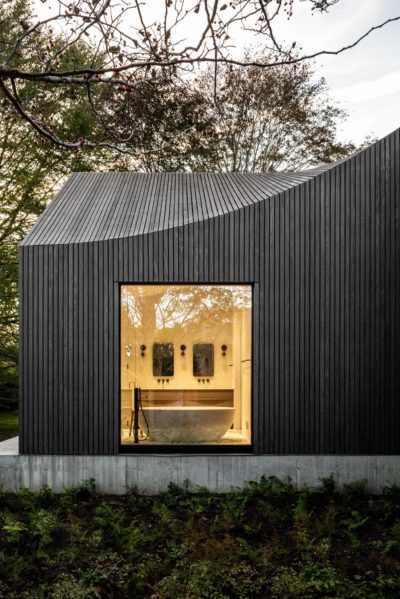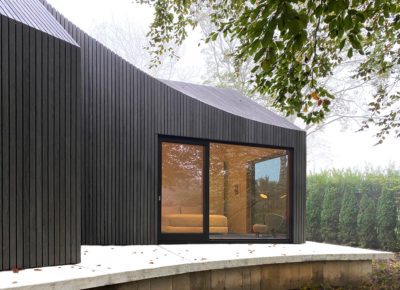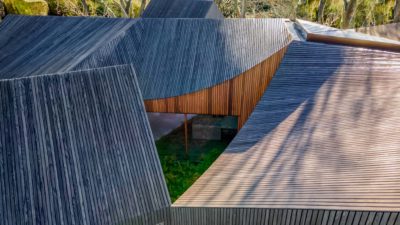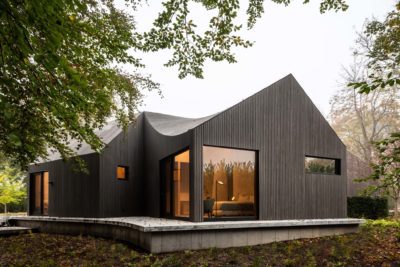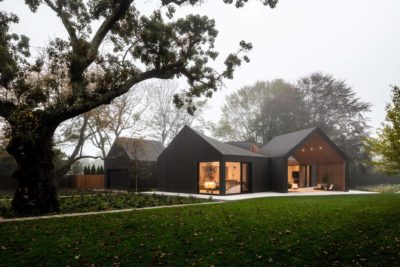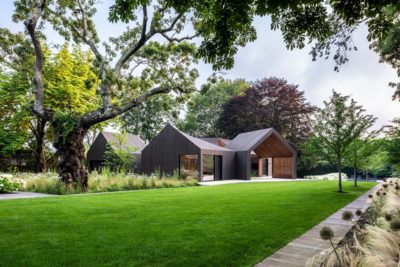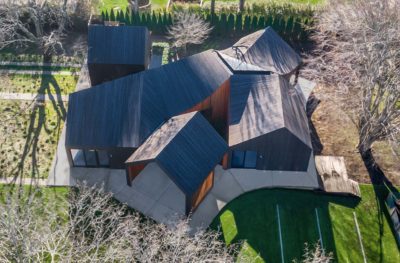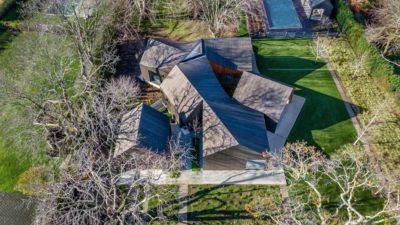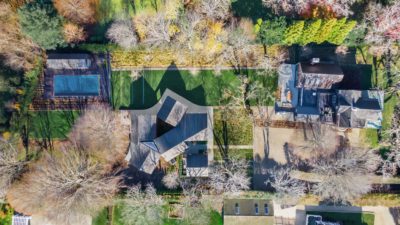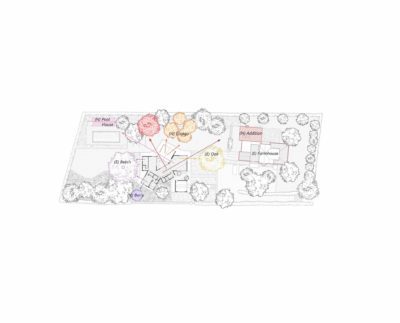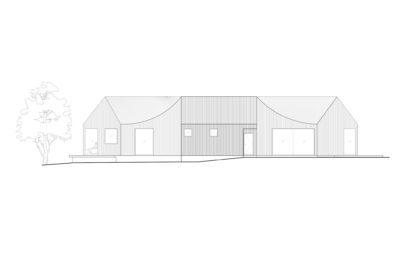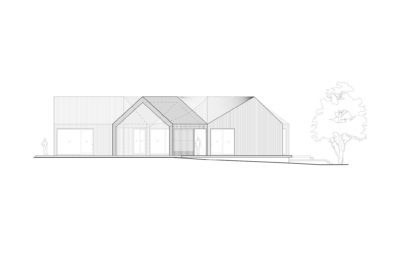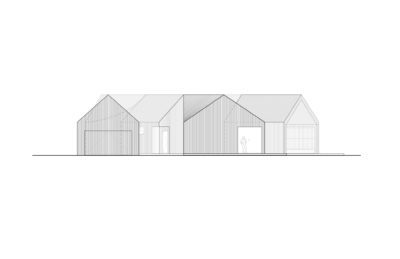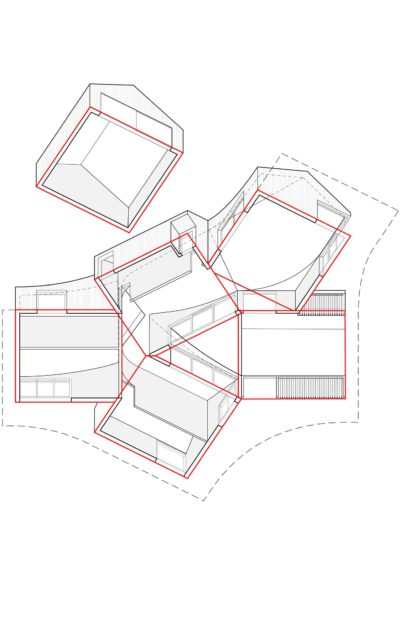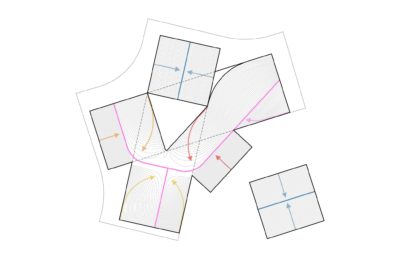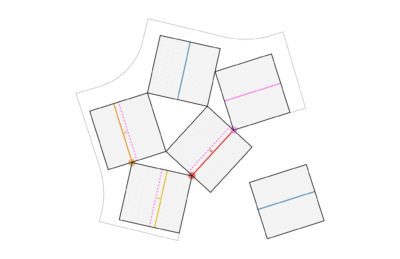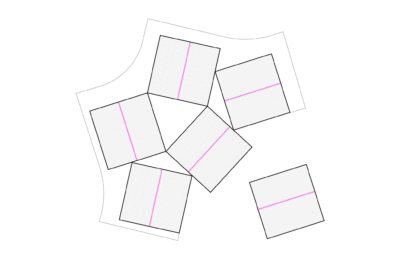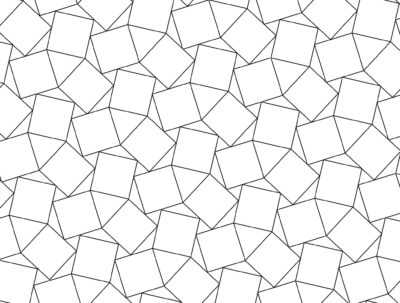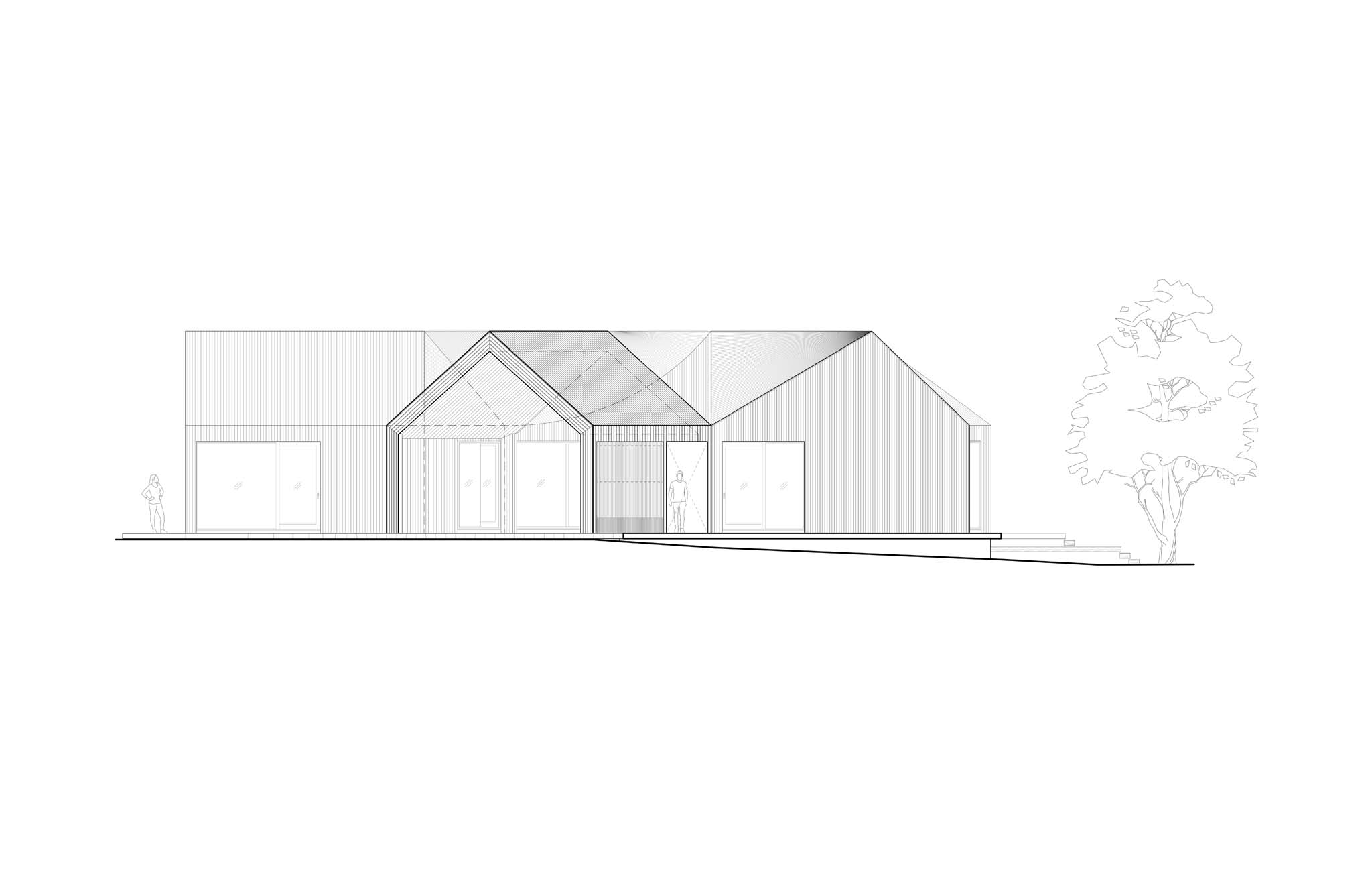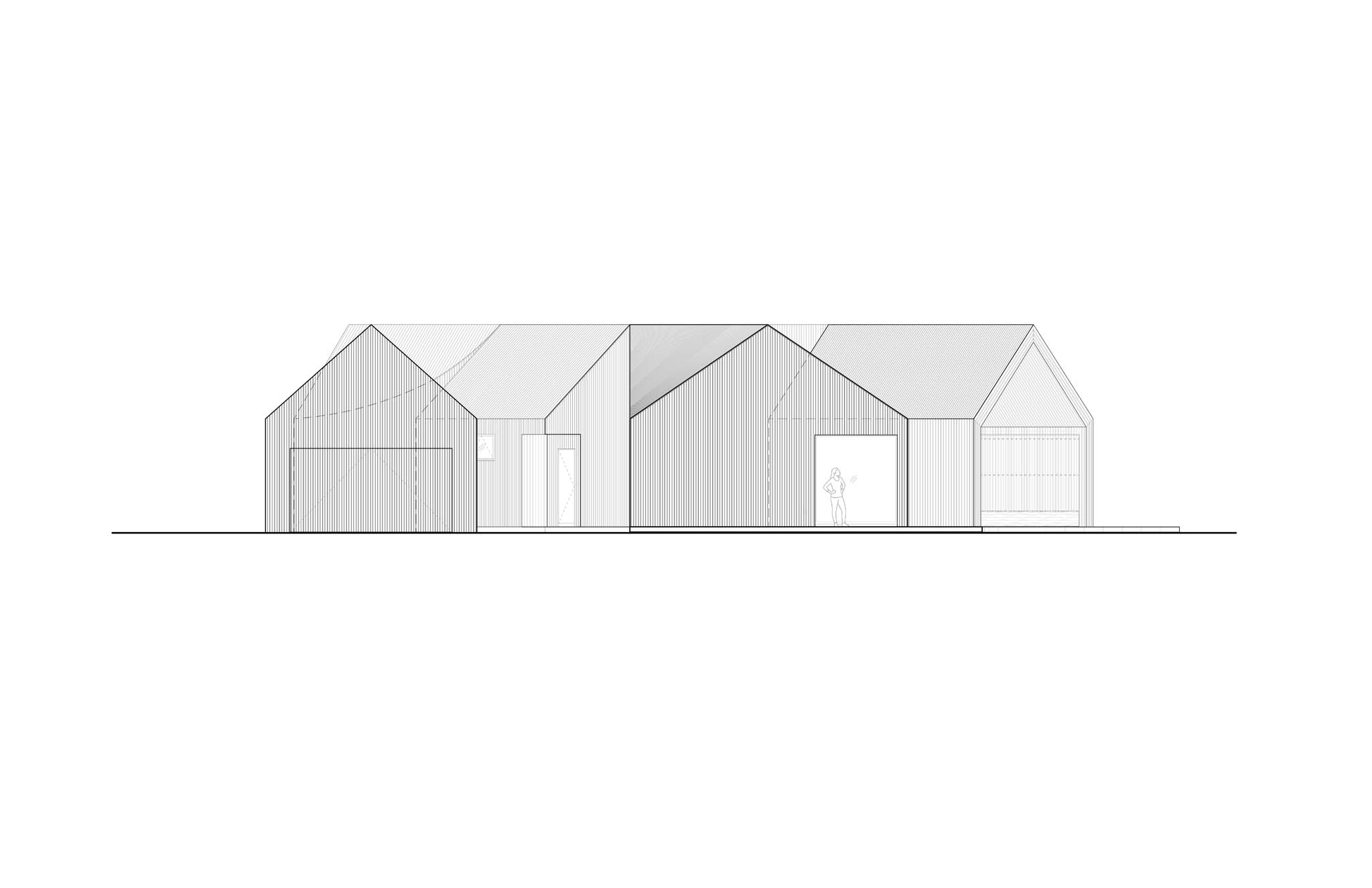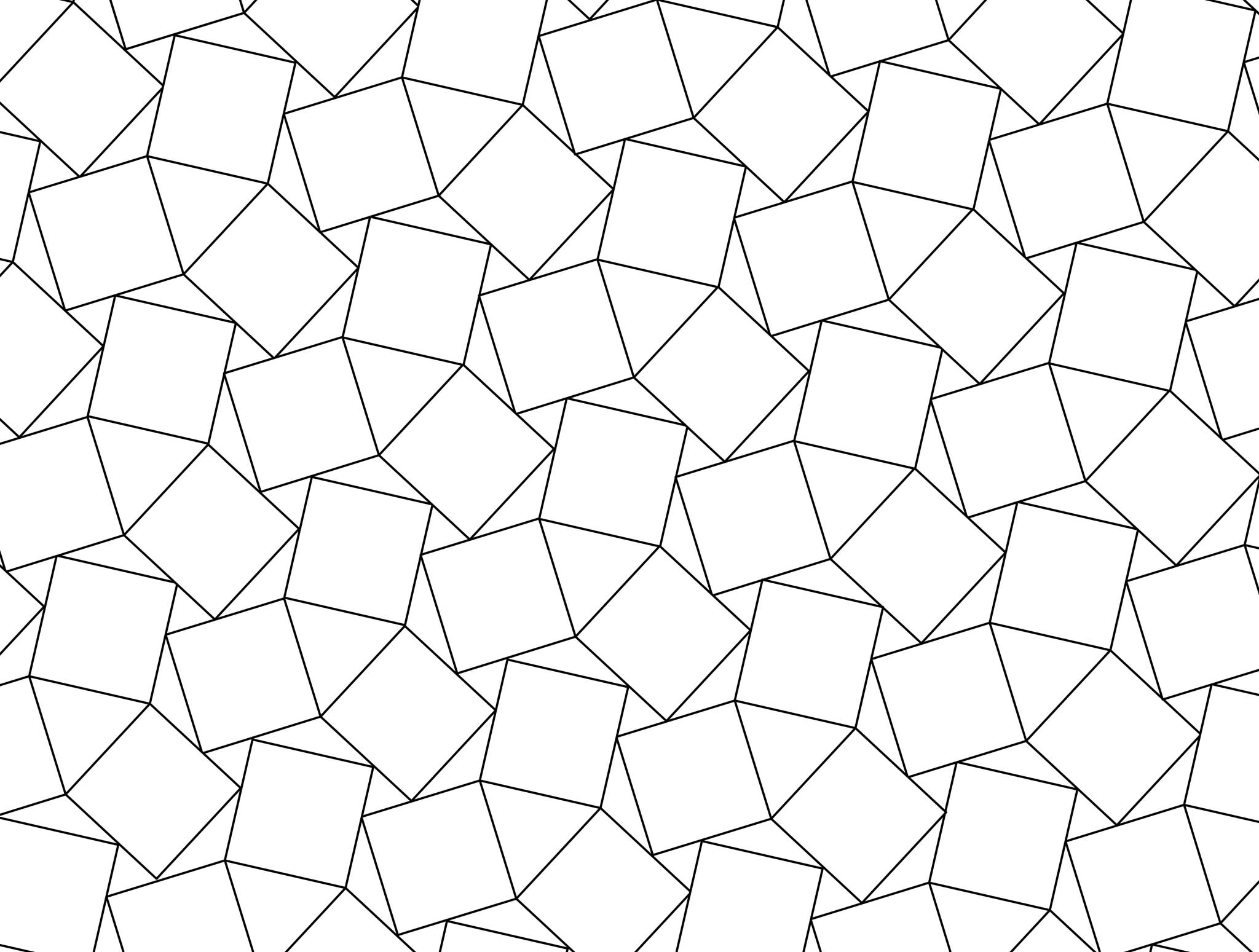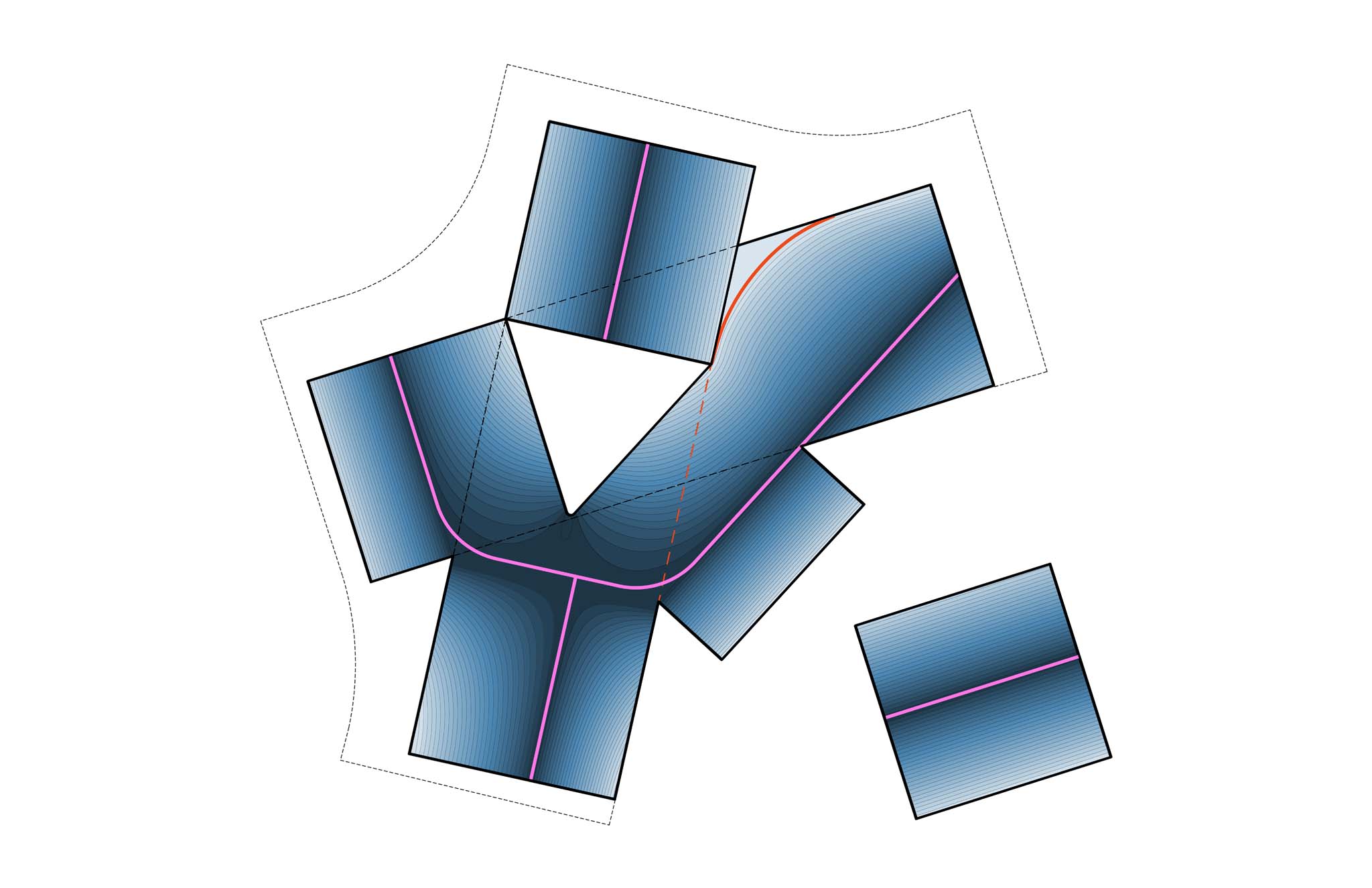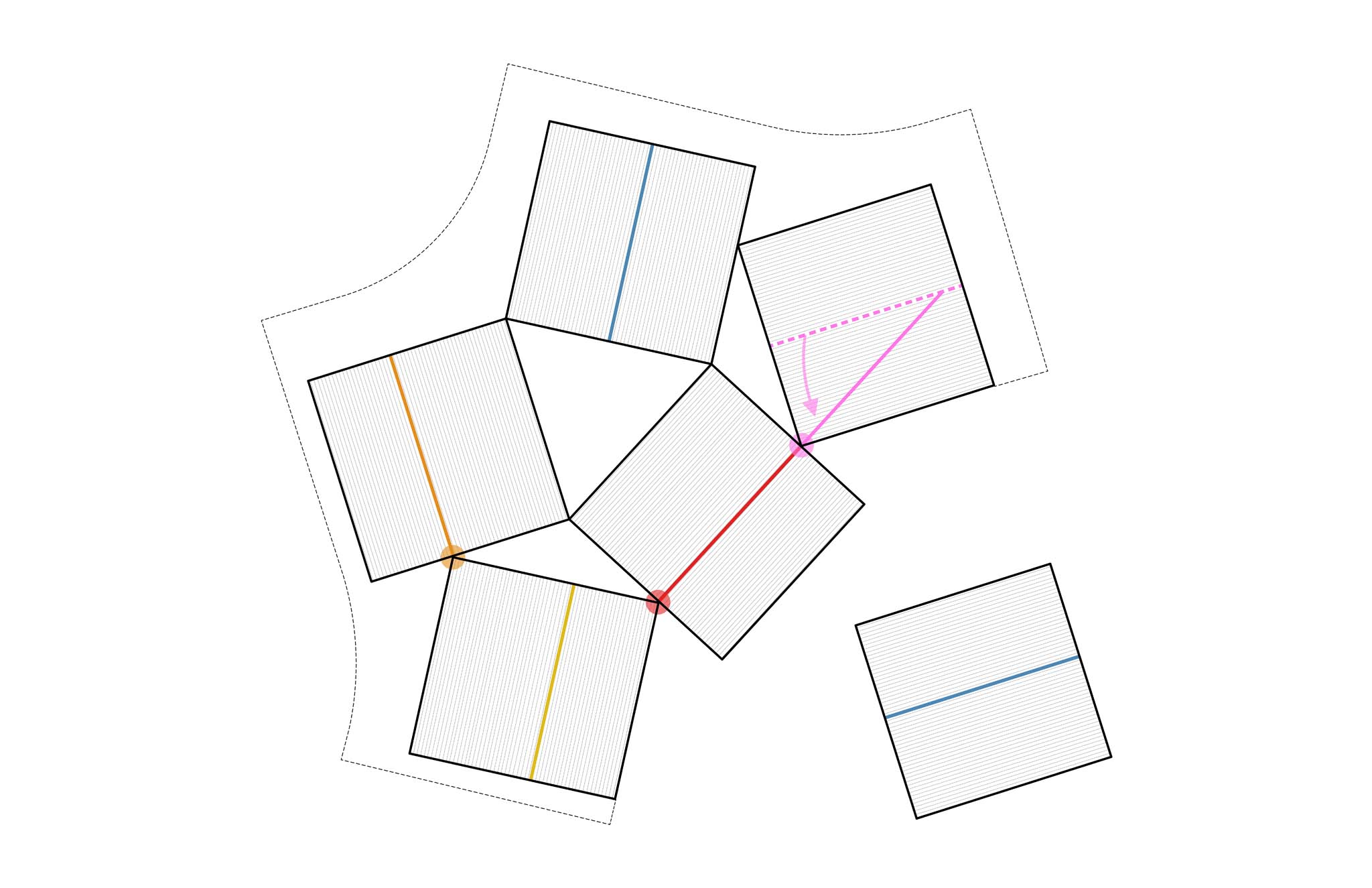Project Credits & Specs
- Architects: Young Projects
- Photographs: Alan Tansey, Lifestyle Production Group, Young Projects
- Location: Bridgehampton, New York, United States
- Area: 3 500 ft2
- Year: 2021

Project Description
Architectural studio Young Projects has completed Six Square House, a new 3,500-square-foot home located on a verdant, two-acre lot in Bridgehampton, New York. The residence is made up of six 24’x24’ gabled modules, arranged to align roof ridges and create continuity from one module to the next. In contrast, each module’s roof eaves flow upward and downward, which results in a variety of undulating surfaces and unexpected sight lines across the exterior and interior of the home. The home is clad in deep gray, slatted Accoya wood, whose striations enhance the roofscape’s dynamic edges and arcs.


The completion of Six Square House coincides with Young Projects’ addition to the lot’s historic 1850 farmhouse, which is located at the front of the property, and a new pool house, gunite pool, and ipe deck at the property’s rear. Sited at the lot’s center, Six Square House becomes the nucleus of the property as well as the client’s primary on-site residence, with the farmhouse becoming the guest home.
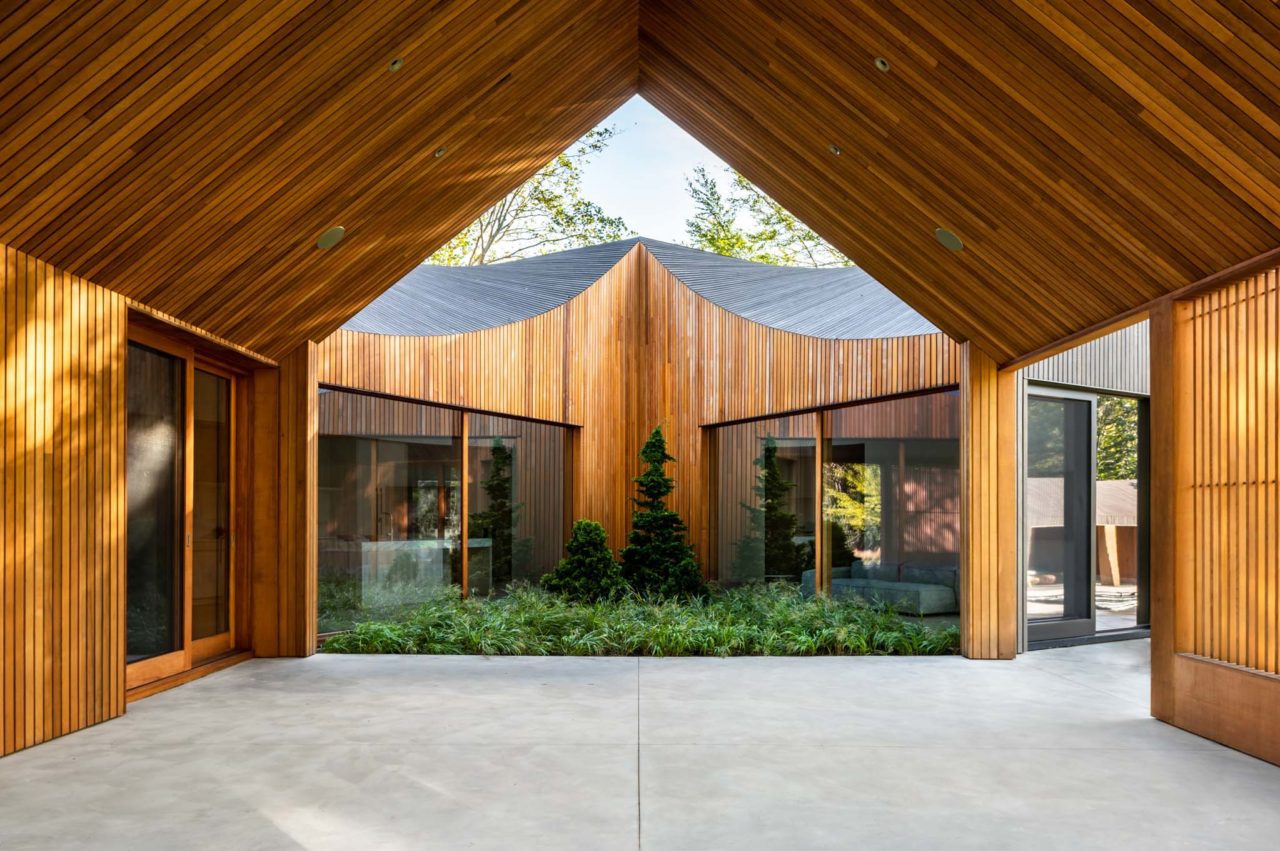
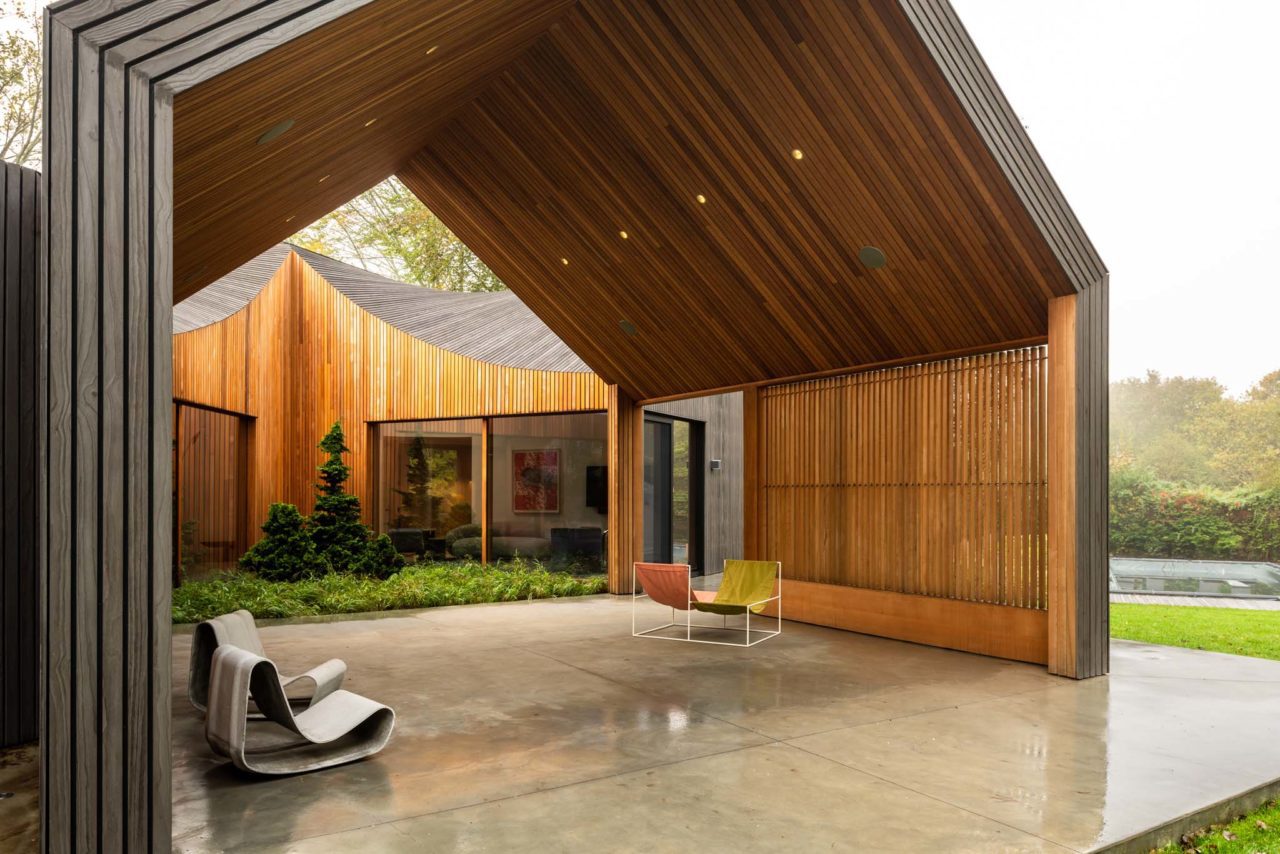
Young Projects designed Six Square House as a contemporary counterpart to the property’s farmhouse, which the client had outgrown. The studio set out to create a new residence that nods subtly to the historic architecture of Long Island, while radically reimagining a traditional barn typology as an elegant, innovative home. “Starting with the simple vernacular typology of a barn, the hybrid roofscape of the connected squares ebbs and flows as a new dynamic figure, contemporary in its language but timeless in its origin,” says Bryan Young, founder, and co-principal of Young Projects.
Approaching Six Square House from the front of the property provides a view of the garage and living room modules, separated by a polished concrete path that leads directly into the home’s focal point: a triangular courtyard. The deep-grey rain-screen facade is striking. The slatted roof aligns with slatted exterior walls to create long, vertical striations that begin at the roof ridge and cascade to the ground. Roof and exterior walls are constructed from the same material: charred, stained, and sealed Accoya rain-screen and Western Red Cedar rain-screen. These are durable and low-maintenance engineered woods that play off of the farmhouse’s historic cedar facade while reading as distinctly contemporary.
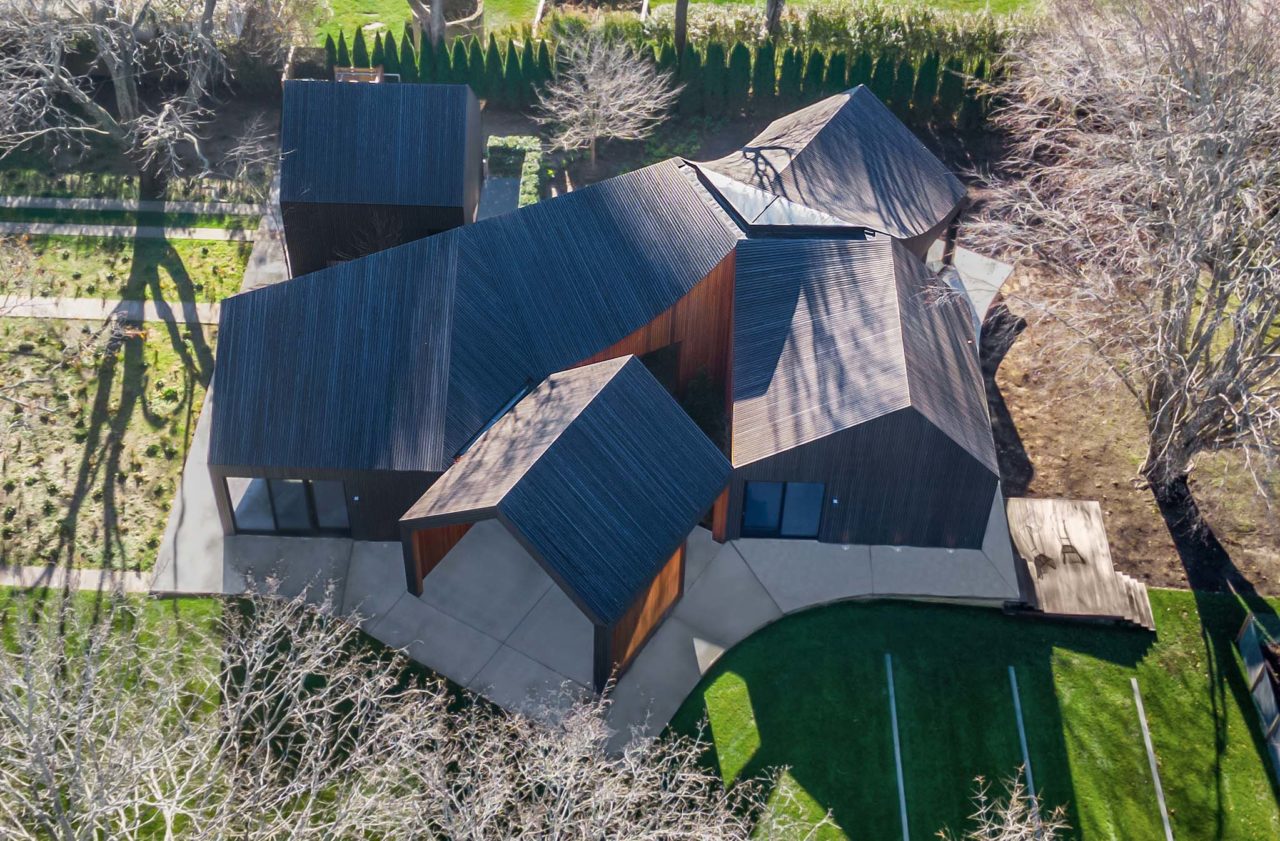

“The exterior palette was selected with the cedar of the farmhouse as a starting consideration,” says Marciniak. “We found the black very striking and contemporary in its initial appearance, but the material eventually weathers to a really nice platinum grey.”

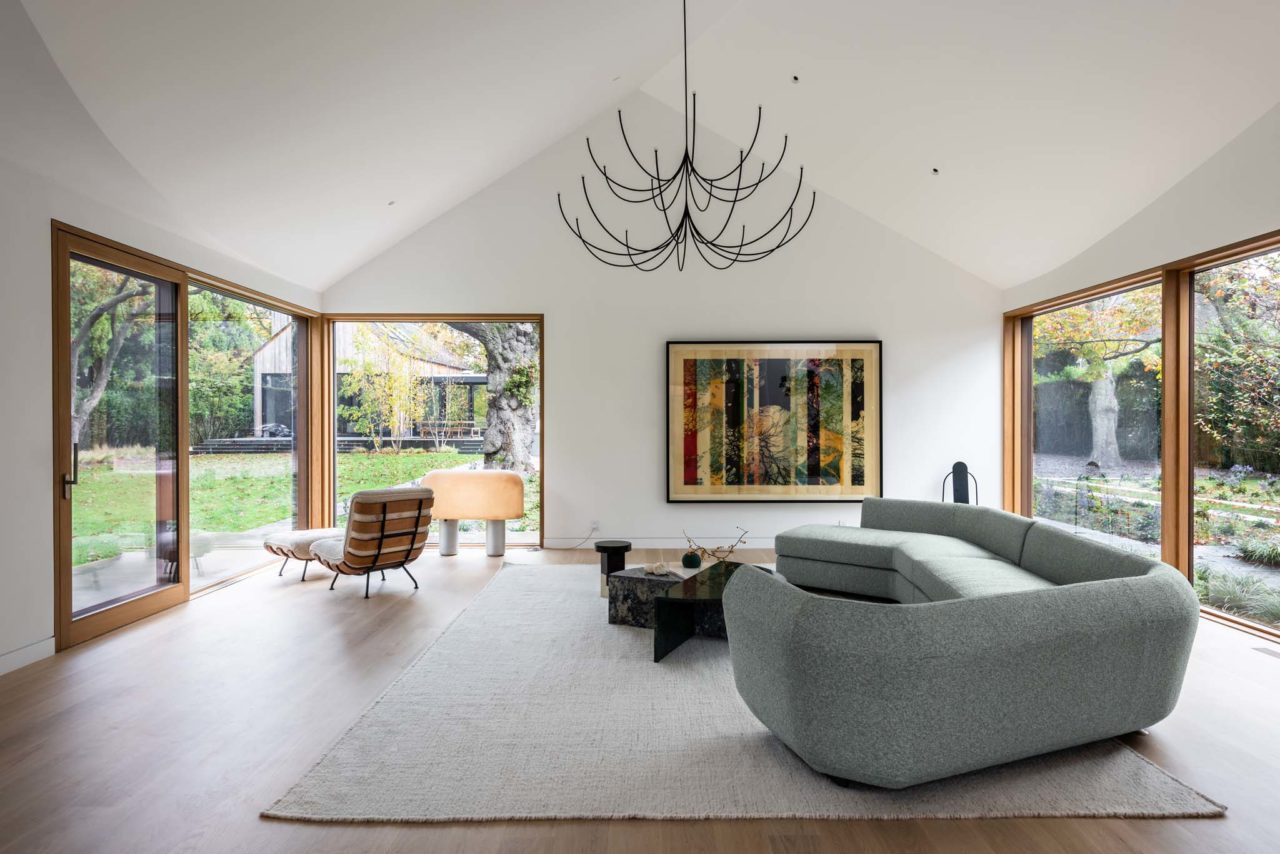
In terms of the plan, the six modules that make up Six Square House tessellate around the central triangular courtyard. For Young Projects, this arrangement offered a compelling visual balance between symmetry and asymmetry, depending on the inhabitant’s point of reference in the home. The hybrid roofscape, which combines aligned roof ridges and curving eaves, enhances this dichotomy.
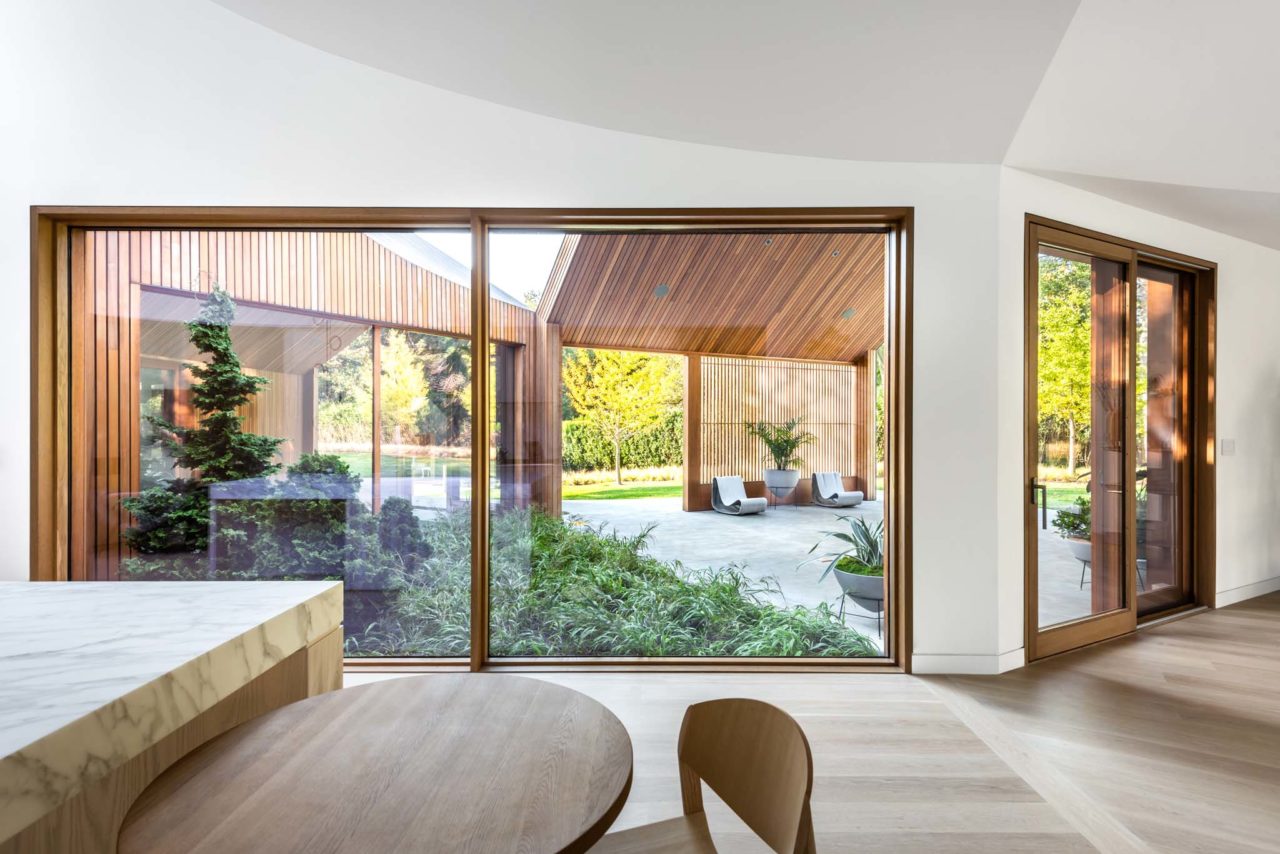

The tessellated arrangement also creates strategic programmatic divisions across the home, with each module loosely tied to a different use: living, kitchen, main bedroom, secondary bedroom, porch, and garage, all of which encircle the triangular courtyard. Additionally, this layout takes advantage of the surrounding landscape, with each module offering a different view of the lush property.
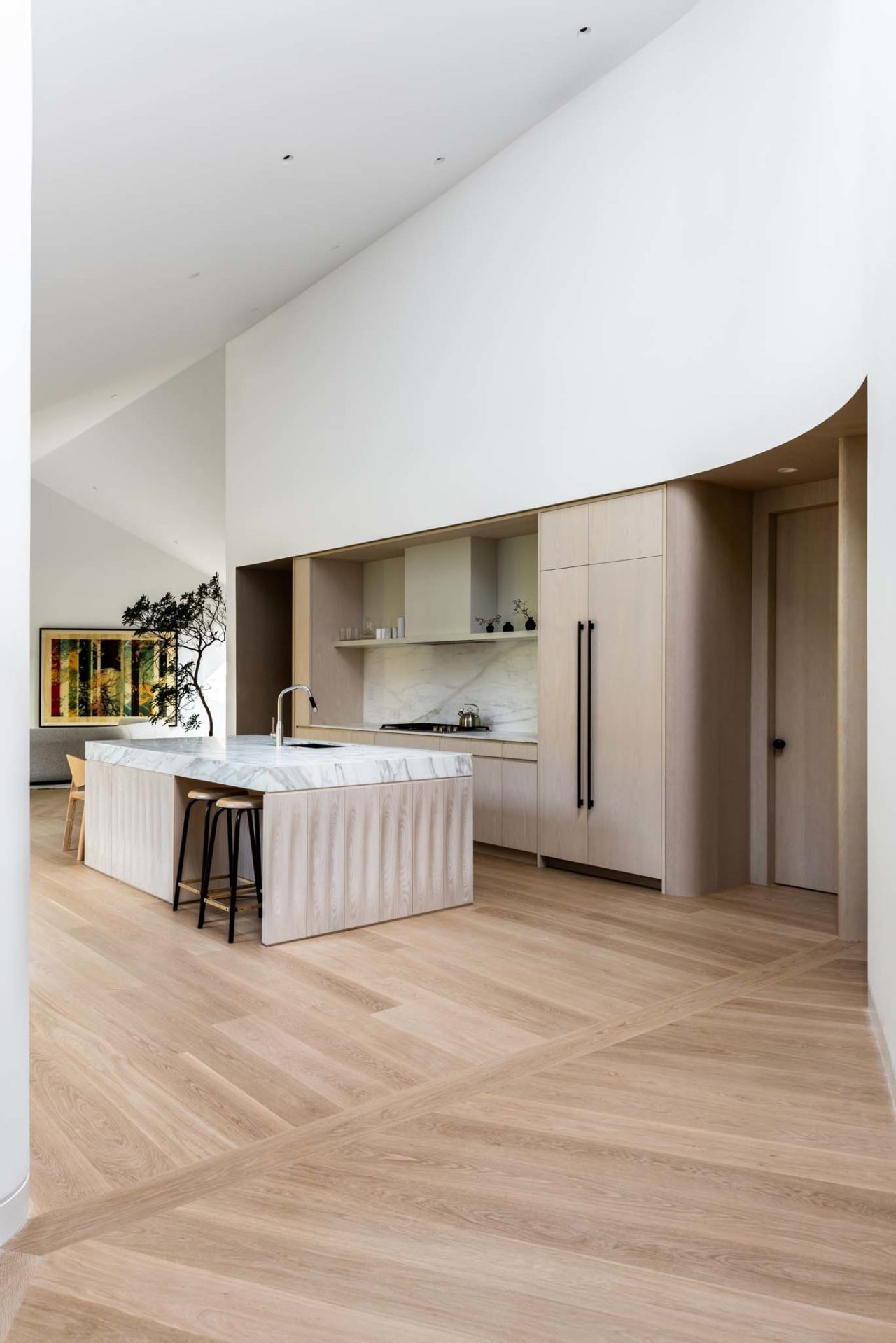


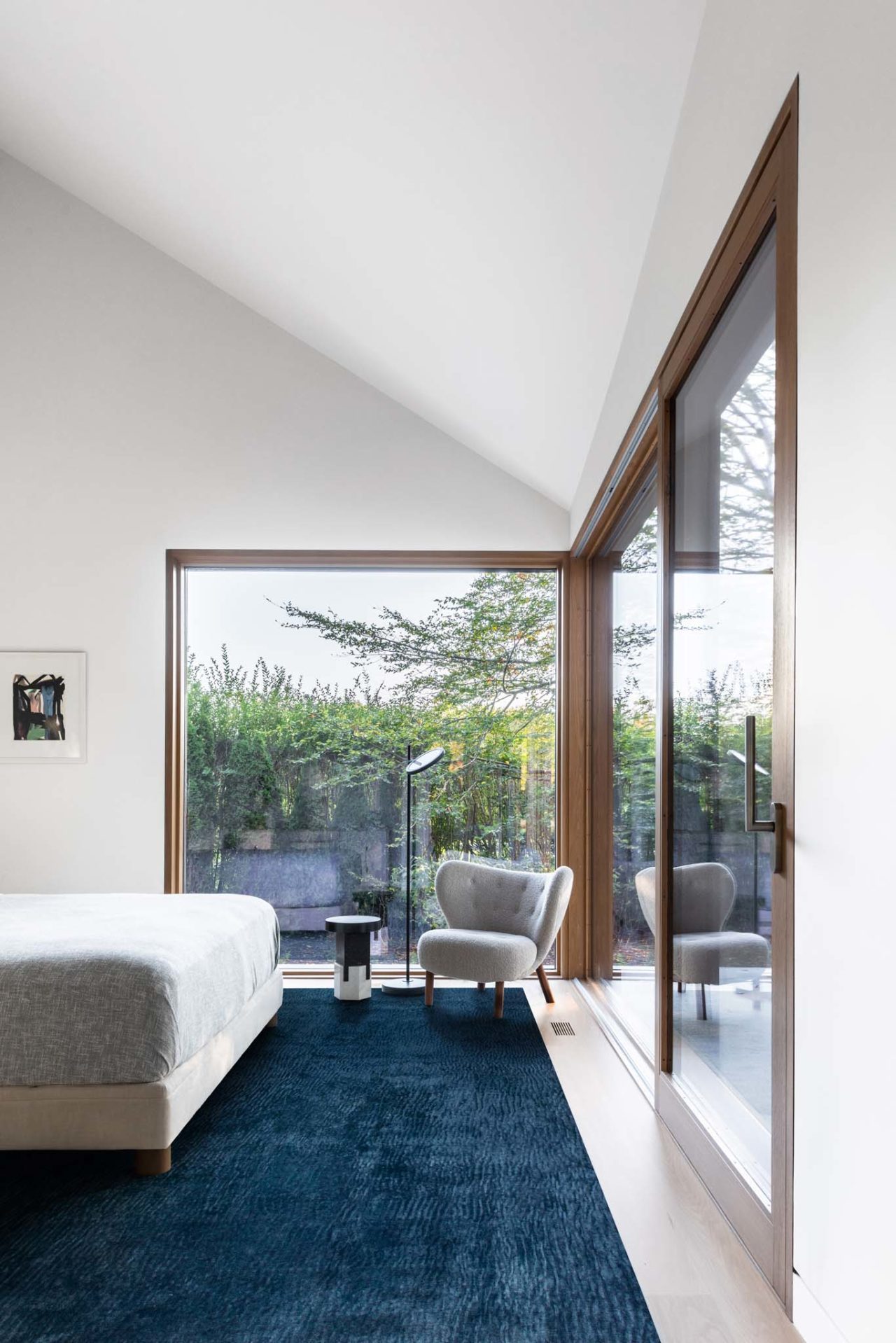
Bedrooms feature framed views of the site’s mature and gnarled trees for privacy. In particular, the main bedroom offers a direct view of an old purple beech tree, which is very dear to the client. Living spaces open directly onto a landscape designed for entertaining: central courtyard, meadow, and pool house. The kitchen, located at the center of the house, is adjacent to the “left-over” triangular courtyard and looks through the open porch that frames views of the landscape beyond.
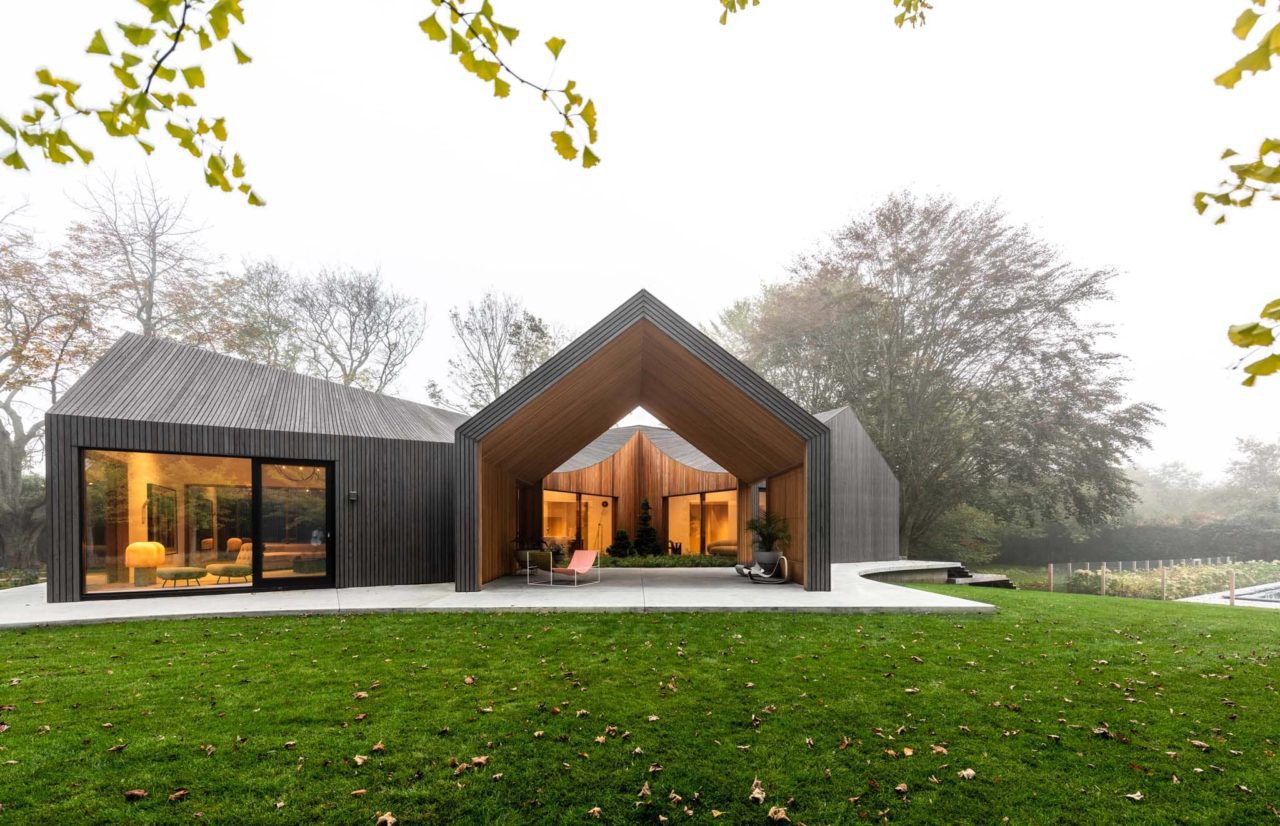
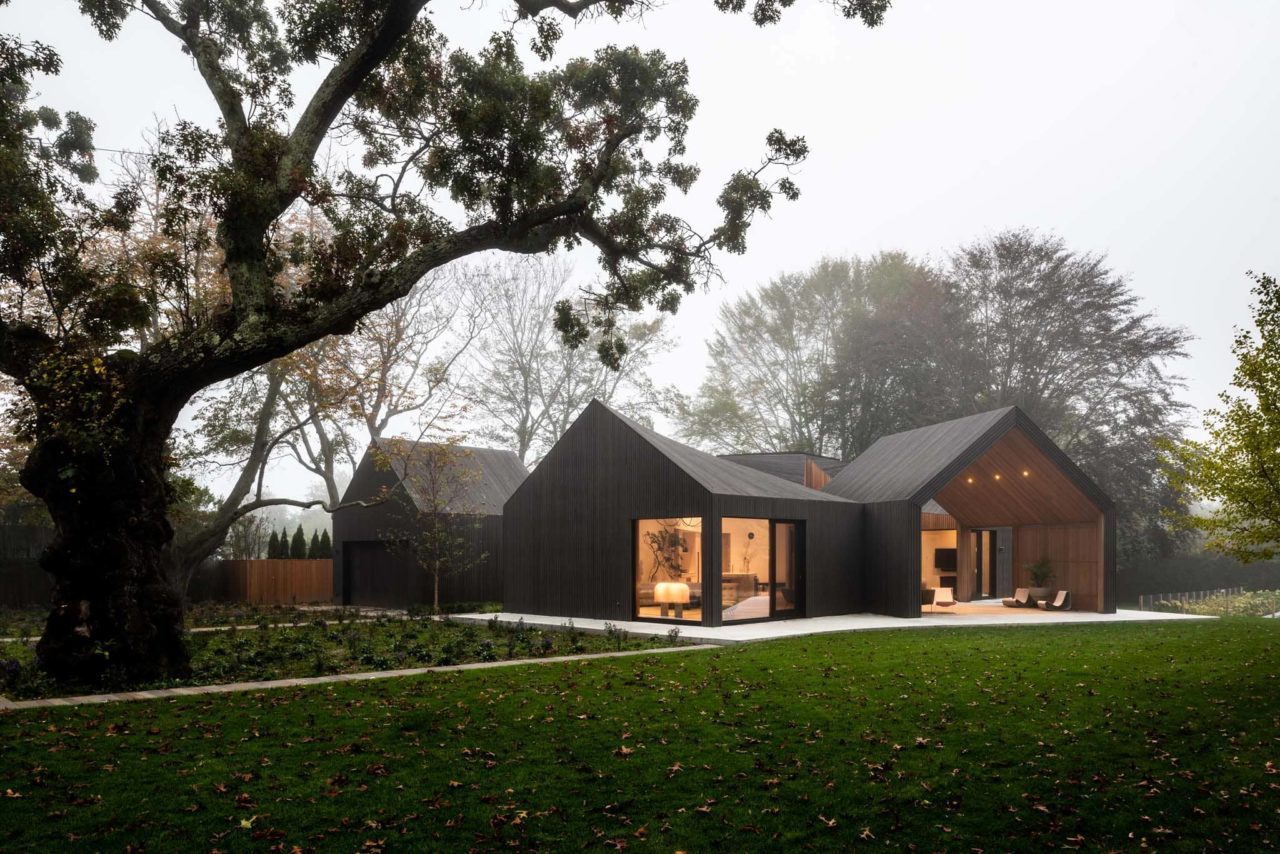
The living areas and kitchen are linked, resolving as a large open space that emphasizes the undulating flow of the ceiling—a result of the irregular roofscape above. “The spaces within the house both respect and blur across the modules,” says Marciniak. “And the connections between modules generate the most interesting interior spaces as well as the interesting roofline geometry.” While the ceiling undulates through the common area, it is marked by a ruled geometry; the wood framing itself is not bent, rather each straight rafter rotates slightly relative to its neighbors, developing a curving surface in aggregate.
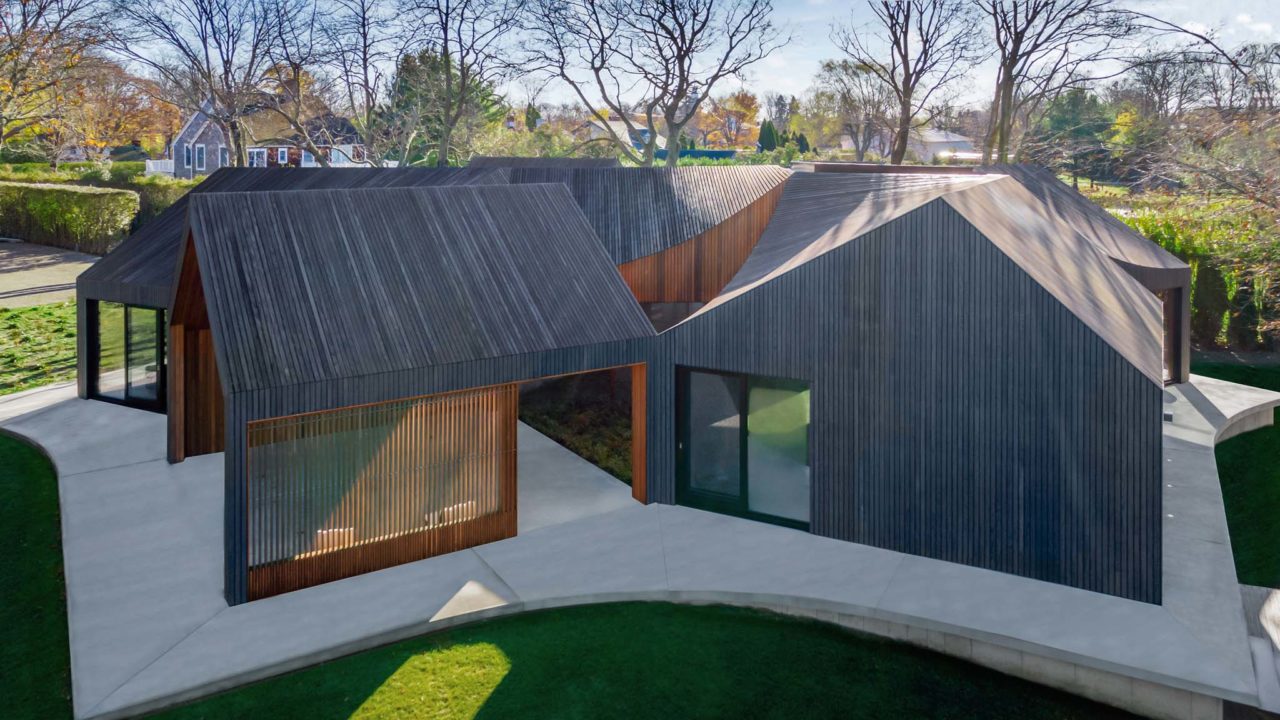

Throughout the home, material selections and their corresponding color palette follow a neutral, organic spectrum, codified by a given space’s use. Black and platinum grey materials define the home’s exterior: the polished concrete patios and charred Accoya facade and roofscape. Ochre-hued cedar clads the home’s hybrid indoor/outdoor zones: the triangular courtyard and porch, as well as the frames for all exterior-facing doors and windows. Finally, the interior is sheathed in alabasters and whites: walls and ceilings are gypsum plaster, flooring, and millwork is white oak and ash, and countertops and selected shelving are light marble (Calacatta Caldia, Calacatta Gold, Mountain White, Olympian White).
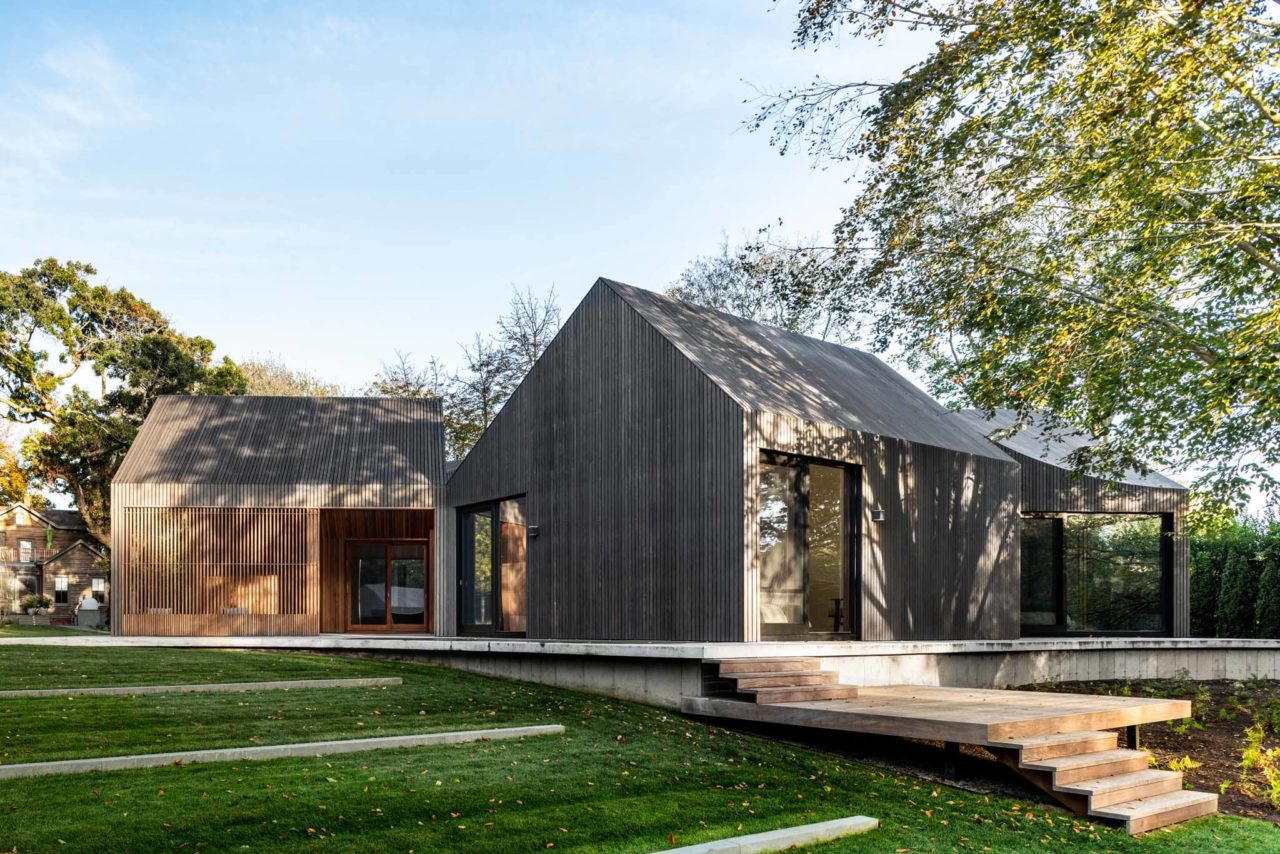

“The interior palette was selected to have a general lightness and warmth appropriate for a summer house in the Hamptons: soft, light wood finishes, warm white walls, and stone countertops,” says Marciniak. “Materials are generally composed in a way that reads as textural variations on a tight color palette rather than high contrast or loud materials.”


Overall, Six Square House strikes an elegant, innovative balance across both interiors and exteriors: “On one hand, the design of the house is governed by its own geometric logic,” explains Young. “On the other, the design reframes and connects back to the overall site.”

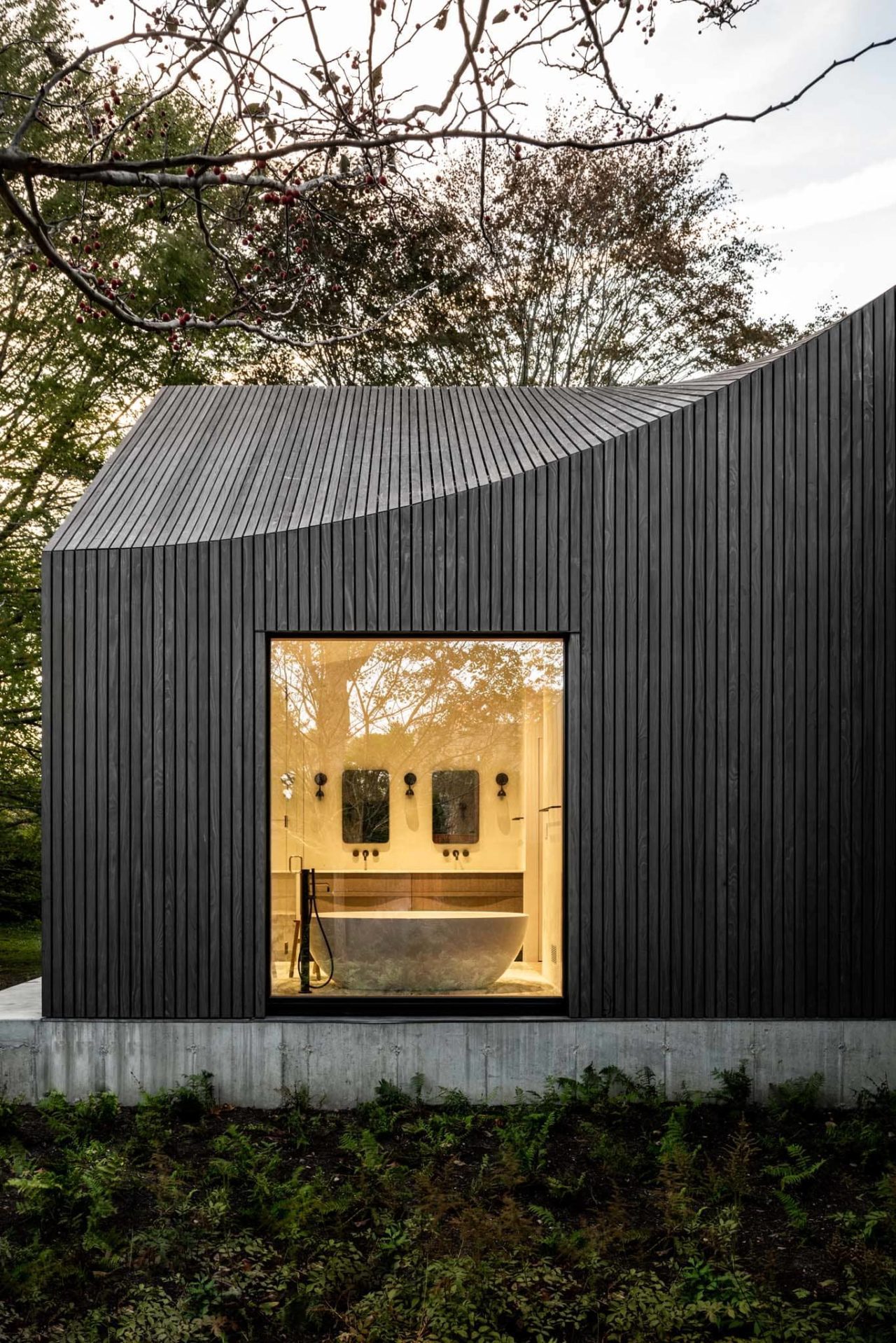

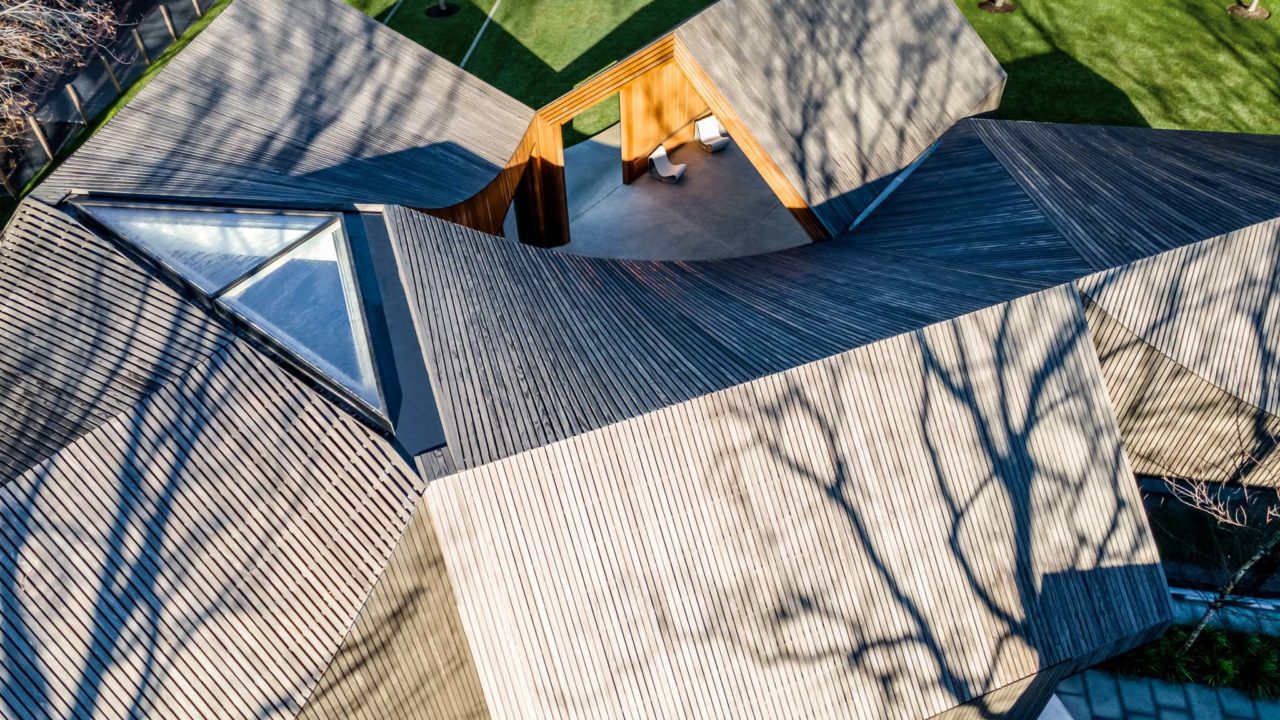








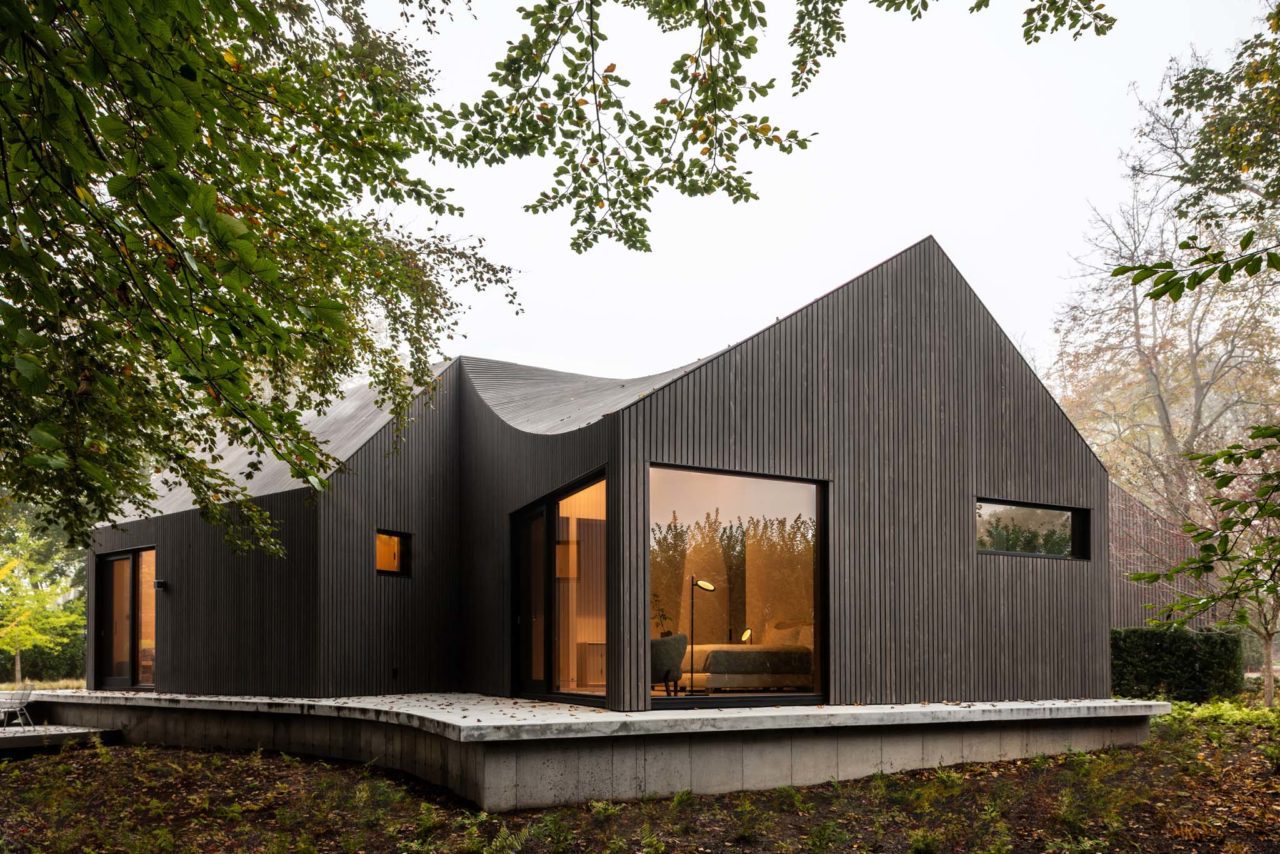




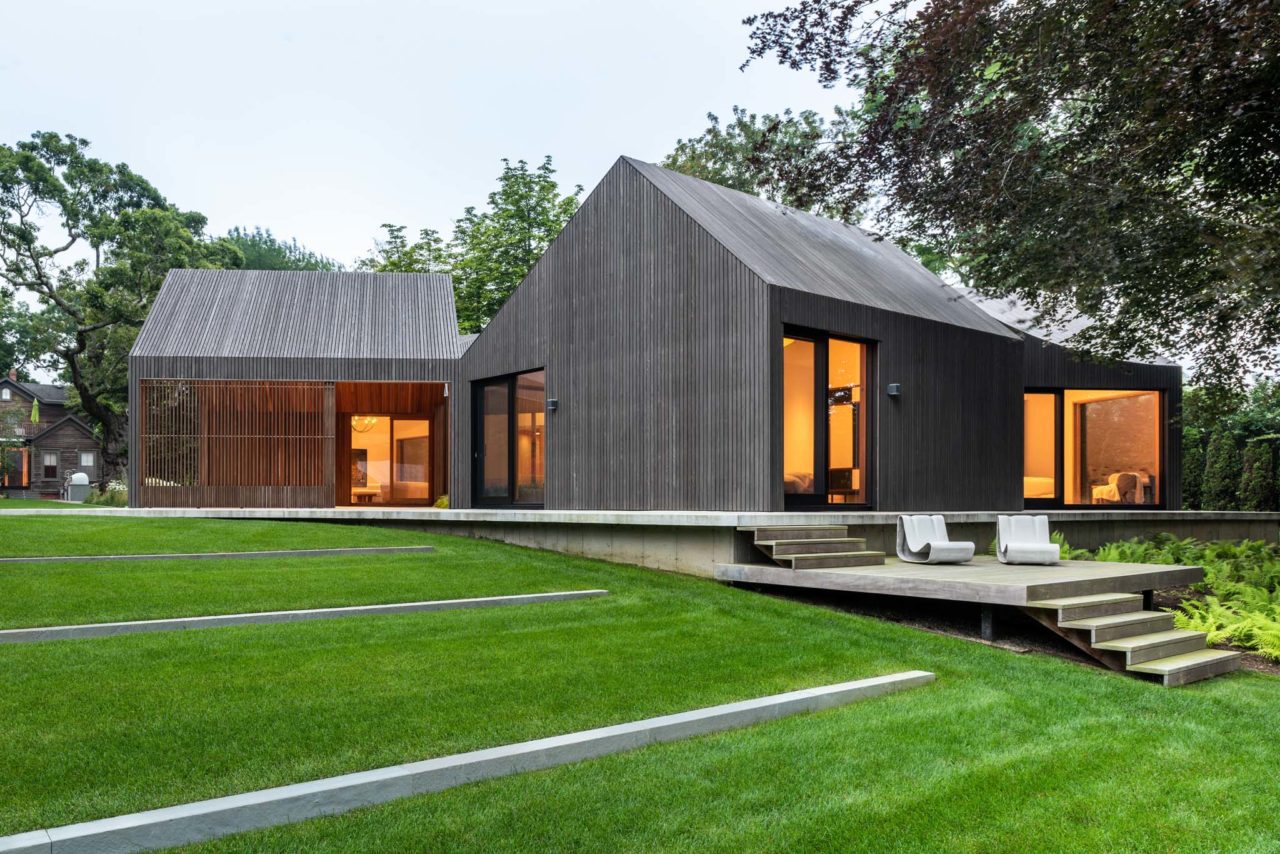


The project description is provided by the architects.
About the Architects

Young Projects is an architecture and design firm based in New York City, founded in 2010 by principal Bryan Young. The scale of their work stretches to include buildings, interiors, furniture, material prototypes, and objects of curiosity. In most of the work, there is an emphasis on making, material sensation, figuration, and spatial complexity. Building typology is often a focus of inquiry. Hybrids and ambiguity exist in favor of singularity. In each project, they seek to engage and respond to the unique parameters that define the essence of the design problem and the aspirations of their clients including sustainability, materiality, and natural light, balanced with considerations of project schedule and budget.
